
a magazine from the National Peanut Board Spring 2024 issue 49 news/food/innovations/wellness/marketing Rooted in the Past, Planting Seeds Towards the Future. PQ feature story NPB Redefines the Meaning of as American as Peanuts with We the Peanut Kids Come First: NPB Bolsters School Nutrition Outreach in 2024 Exploring Future Uses for Peanuts: Q&A with Dr. Nino Brown NationalPeanutBoard.org
The National Peanut Board works on behalf of America’s peanut farmers and their families. Our mission is to improve the economic condition of USA peanut farmers and their families through compelling promotion and groundbreaking research.
National Peanut Board 2024 Officers and Members
Greg Baltz, Chairman
Casey Cox Kerr, Vice Chairman
Neal Baxley, Treasurer
Jeff Roper, Secretary
Alabama
Tom Corcoran
Thomas Adams, alternate
Arkansas
Greg Baltz
Allen Donner, alternate
Florida
William Carte
Nick L. Marshall, alternate
Georgia
Casey Cox Kerr
Wesley Webb, alternate
Mississippi
Lonnie Fortner
Alan D. Atkins, alternate
Missouri
Clay Deane
Russ Hoggard, alternate
North Carolina
Ray Garner Jr.
Julie Ward, alternate
Oklahoma
Mark DeLeon
Les Crall, alternate
South Carolina
Neal Baxley
Doug Jarrell, alternate
Texas
Jeff Roper
Mason Becker, alternate
Virginia
Paul Rogers
West Drake, alternate
At-Large
Lucy Shackelford
Clifford Neece, alternate PQ
Editor:
VP

A Message From Our 2024 Chairman
Dear Fellow Peanut Farmers,
As I step into this role as chairman of the National Peanut Board (NPB), I reflect on two things. First, the dedication and wisdom of those who have chaired this Board before, knowing that their leadership has placed us on a solid foundation. And second, my experiences that have prepared me to take on this role. Through NPB I have been exposed to all aspects of the peanut industry and see the broad vision of those who contribute to its success.
As we bid farewell to Bob Parker, our retired president and CEO, we embark on a new journey with Ryan Lepicier, our newly elected president and CEO. Ryan comes in with his accomplishments well known, having headed up NPB’s marketing and communications team. We are familiar with his talents within the industry and the respect he has earned. This transition is made smoother because of his career within NPB. His experience helped him step into this role and we, the officers and Board, now have a familiar leader in place.
As the search committee prepared to interview Ryan for this position, it was uncertain how he would approach the challenges we brought forward. We recognized his talents but were looking for his vision. He brought that vision forward clearly as he expanded on a very welldeveloped presentation on how NPB could achieve our goals through what he described as driving impact.

Lauren
Markita

As chairman, I see the excitement of the Board and the engagement of the staff as we step into this new chapter. There will be exciting opportunities to further promote peanuts and enhance funding for production research. We will continue our leading role in education and research to reduce the instance and severity of peanut allergies and to strive for their eradication. Through all of this, I see us holding true to our mission: To improve the economic condition of the U.S. peanut farmer and their families through compelling promotion and groundbreaking research.

1 PQ
Editorial Staff & Contributors
Stevens
Lindsay
& CMO: Dena Malsom
Highfill Williams
Lewis, MS, RDN Valeri Lea Nichole Bigley Christina Billos Sandra Flores, Art Direction Zarina Waldo, Senior Designer & Illustrator Silvia Flores, Copy Manager Samantha P. Perez, Junior Designer & Illustrator Terence P. Ward, Proofreader
Ryan Lepicier NPB President and CEO
Greg Baltz Chairman
CONTACT INFORMATION 3350 Riverwood Parkway, Suite 1150 • Atlanta, Georgia 30339 • toll-free tel: 866.825.7946 • tel: 678.424.5750 • fax: 678.424.5751 email: peanuts@NationalPeanutBoard.org • web: NationalPeanutBoard.org

Reflecting on our Past, Building our Future
 BY RYAN LEPICIER President & CEO
BY RYAN LEPICIER President & CEO

As I settle into my new role as the National Peanut Board’s (NPB) president & CEO and I reflect on my nearly 16 years leading marketing and communications at NPB, I’m proud of all we have accomplished. We’ve witnessed a step-change in peanut yields, reached an all-time high in consumption and the headwinds from peanut allergy are slowing as we see promising new solutions on the horizon — including Xolair, a new treatment for food allergies approved by the FDA in February.
As we work to grow peanut consumption in the years ahead, we must maintain our agile marketing approach. Innovative marketing is about the quest for creative ideas that earn attention and inspire action — and it’s core to what we do at NPB. For peanut products to be relevant to today’s consumers, NPB must continue to embrace marketing that breaks through the noise to reach consumers.
I will play a leading role in shaping our marketing strategy by challenging our team to develop bestin-class programs that set peanuts apart from the competition and earn the favor of Gen Z and millennial consumers. We’ve already earned the top spot as the most popular nut among these cohorts; now we must maintain this position and build upon it through bold and cutting-edge promotions.
More than 20 years ago, NPB’s Board of Directors decided that peanut allergy was a serious problem that would have a long-term impact on consumption. They said if peanuts are part of the problem, then peanut farmers need to be part of the solution. They educated themselves on the issue and began funding research. Their passion and curiosity paved the way for all the progress we’ve made. We will carry on in that spirit, and I have no doubt we’ll continue making great progress toward eradicating peanut allergy once and for all.
It’s an honor to work for farmers. And it’s an honor to promote delicious, nutritious, sustainable peanuts. Working together, I know we can accomplish so much.
2
Rooted in the Past, Planting Seeds Towards the Future.
By Lindsay Stevens

There’s no other industry where you can say the majority of the people in it have been doing this for multiple generations. While Ryan Lepicier wasn’t born on a peanut farm, his passion for peanuts is unmatched. Lepicier has been with NPB since 2008 and served in a variety of roles. For many, it’s hard to remember the Board in a ‘pre-Ryan’ world. But for Lepicier, the journey to his current role took unexpected twists and turns and was shaped and influenced by a passion for storytelling.
3 PQ
His passion began when he was first introduced to television. Lepicier’s dad worked in television doing art direction and set design on shows like The Price is Right, The Young and the Restless and General Hospital.
“When I was a teenager, I would go to work with my dad during the summers and watch them make TV shows,” Lepicier said. “I thought — they pay people to do this? This looks fun, I’m going to work in show business and be an actor. Fast forward to college, I decided Hollywood wasn’t for me. But I still loved the idea of using the magic of TV to tell stories. I ended up studying journalism and communication and worked as a TV news reporter and anchor early in my career.”
According to Lepicier, the tragic news stories weighed too heavily on him, so seeking a new avenue to tell stories, he ventured into documentary filmmaking, further honing his craft. Documentary filmmaking led him to the Atlanta mayor’s communication team, which led him to NPB, and “the rest is history.”
Joining NPB, he discovered a passion for the work, driven by the mission to promote peanut consumption, combat peanut allergies and support America’s peanut farmers.
“I came to NPB because I always loved peanuts and peanut butter and thought the work sounded fun and interesting,” Lepicier said. “I’ve stayed because I love the people and the impact we have on growing peanut consumption, the work we’re doing to eradicate peanut allergy, and the goodness and wholesomeness of the food America’s peanut farmers grow. I find the work deeply rewarding.”
Reflecting on pivotal moments in his career, Lepicier highlights the groundbreaking LEAP study. The study revolutionized allergy guidelines worldwide by finding that early introduction of peanuts can reduce peanut allergy by up to 86% in high-risk infants. More recently, the Board also funded clinical trials for the recently FDA-approved Xolair, which reduces the risk of a moderate to severe allergic reaction due to accidental ingestion. This dedication to innovation and impact underscores Lepicier’s vision for NPB, where collaboration, competence and innovation drive the organization forward.
Looking ahead, Lepicier envisions a future where NPB remains a beacon of excellence and collaboration within the industry. Guided by strategic vision and a commitment to stakeholder value, he aims to lead NPB into its next chapter, driving impact and innovation across its programs. For Lepicier, NPB is more than a job, it’s a passion.
“When I was growing up, my dad had a knack for espousing life lessons,” Lepicier said. “He would always say things like, ‘Someday when you grow up and have a job, you must treat it like it’s your own business — whether you’re the janitor or the president. That’s the dedication it takes to get ahead.
You have to come to work and solve problems, not create problems.’ I took that advice to heart and have always approached my work like a business owner.”
For Lepicier, success in his role means leaving a lasting legacy of professionalism, kindness and dedication to America’s peanut farmers. As he steers NPB towards its goals, his leadership style emphasizes collaboration, empathy and a deep-rooted passion for the mission at hand.

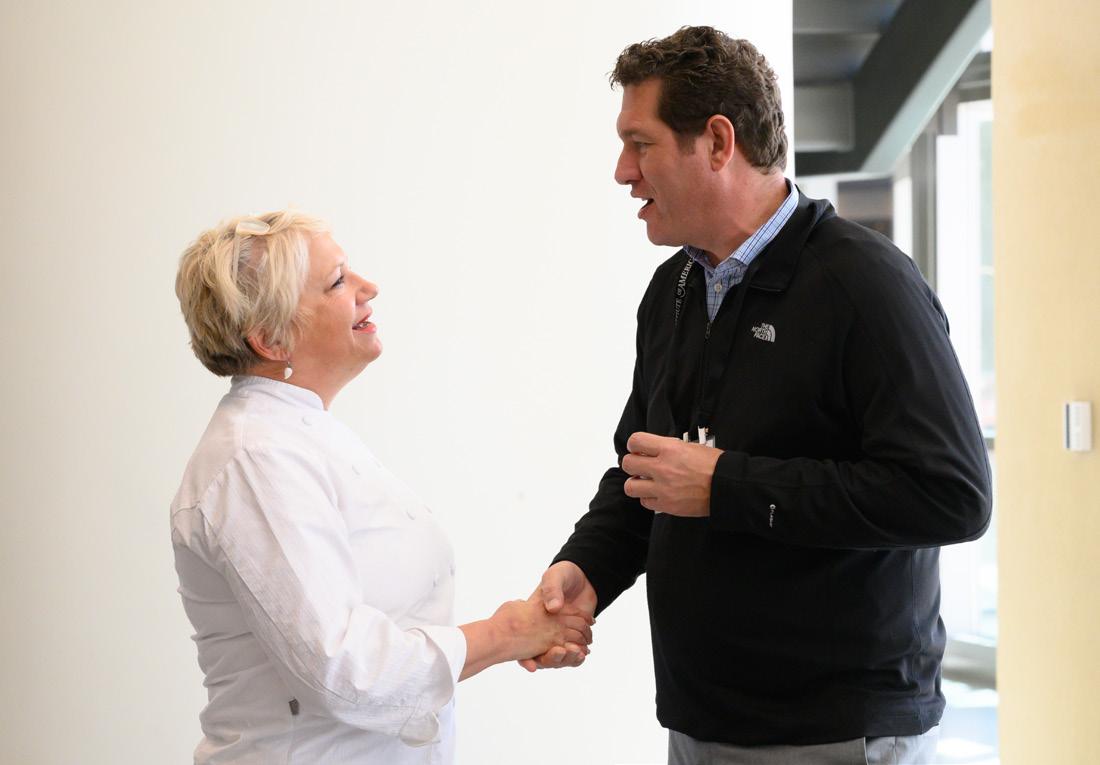
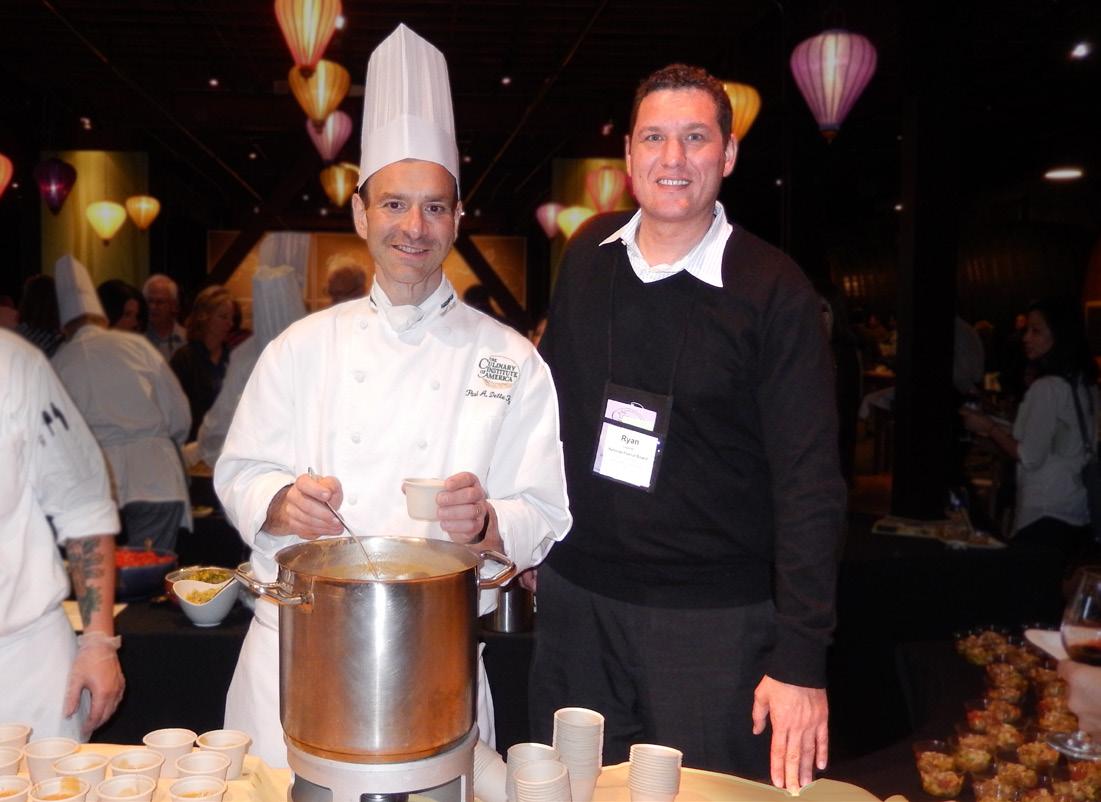
4
(L-R): Barbara Alexander, Culinary Institute of America, and Lepicier at the 2019 Next Gen Food Summit.
(L-R): Greg Baltz, NPB chairman, Bob Parker, former NPB president and CEO, and Lepicier at the International Peanut Forum in 2023
Lepicier with a chef at the 2014 Healthy Kids Healthy Lives Collaborative in 2014
Peanut Power:
Peanut Power: Emerging Trends in New Products
By Valeri Lea and Lauren Highfill Williams
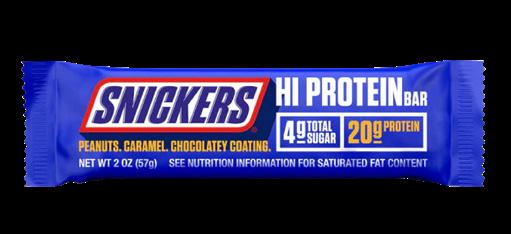
High-Protein
The surge in demand for high-protein snacks and better-for-you foods has spurred the introduction of innovative peanut-based products. Brands are responding to the trend with offerings like Snickers Hi-Protein Bar and Lenny & Larry’s Peanut Butter Cup Dip’d Wafer. These products cater to the sustained interest in high-protein options, as indicated by online search trends reaching a five-year high1.
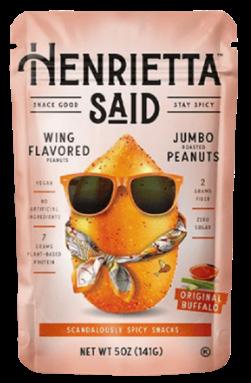
Collaborations
Collaborations and brand extensions are gaining traction to tap into existing customer bases. Skippy P.B. Bites, inspired by Girl Scout cookies, exemplifies this strategy. Meanwhile, Truly Good Foods was one of the winners of “The Most Innovative New Product” award at the Snacks & Sweets Expo in 2023 for their Henrietta Said jumbo peanut snack line, featuring chicken wing-inspired flavors.
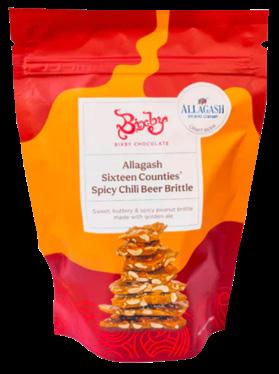
Spicy
Peanuts’ versatility extends to the realm of spicy foods, with Gran Luchito Crunchy Salsa Macha and Fila Manila Mild Kare-Kare Filipino Peanut Sauce showcasing the ability of peanuts to temper the heat and enhance flavor profiles. Peanuts and spice earned Bixby & Co.’s Spicy Chili Beer Brittle a 2023 sofi™ Award from the Specialty Food Association.
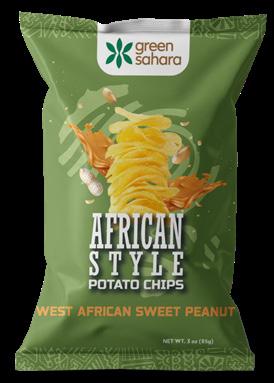
Global Flavor
Global flavor inspirations continue with products like Green Sahara West African Sweet Peanut African Style Potato Chips and Aldi Whole & Simple Edamame Energy Bowl (with peanut butter). These offerings reflect the rich culinary influences that peanuts bring to the table.
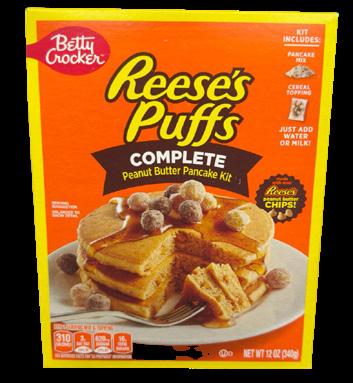
Breakfast
Breakfast is seeing a peanut resurgence with products like Betty Crocker Reese’s Puffs Complete Peanut Butter Pancake Kit and Trader Joe’s Peanut Chocolate Granola. These breakfast options provide a tasty start to the day, incorporating the beloved flavor of peanuts into morning routines.

The chocolate confectionary category got a boost last year with product introductions like the Toasted Marshmallow Co. Fyre Peanut Butter S’mores Toasted Marshmallow Bars and culturally relevant M&M’s Peanut Chocolate Candies packaged for Lunar New Year.
As consumer preferences evolve, these trends indicate that peanuts will continue to play a central role in the creation of innovative and diverse food products. Whether in protein-forward snacks, nostalgic treats, spicy additions or global flavors, peanuts are asserting their prominence on store shelves.
5 PQ
Brandwatch Consumer Research based on data gathered from public posts, blogs, forums and review sites from Jan. 1, 2019, to May 31, 2023, regarding number of individuals talking about high-protein food and diet online 1 Sources
Confectionary
Making Peanut Allergy Prevention Accessible for All Through WIC
By Lauren Highfill Williams
Two million. That’s the number of babies born each year who participate in USDA’s Women, Infant and Children (WIC) nutrition program. When it comes to the frontline of making peanut allergy prevention accessible to all families, WIC is unmatched.
We know that introducing peanut foods as early as 4-6 months can help prevent peanut allergy, as supported by the Dietary Guidelines for Americans. Unfortunately, peanut products are excluded from the current WIC food packages for infants during this earliest critical stage. USDA’s proposed updates to the food packages were released in late 2022; however, as of press time, the final ruling on the new packages has not been published. Regardless of the outcome of the food packages, the National Peanut Board (NPB) is moving forward to drive awareness and action for early introduction with this critical demographic.
Curriculum:
NPB has partnered with Food Allergy Research and Education (FARE) to support curriculum on food allergies for WIC staff, which includes a prevention module. More than 30 state WIC offices have indicated interest and/or are already using the training. The curriculum is available at the FARE FA Academy Home (FoodAllergyAcademy.org).
Dr. Michael Pistiner Projects:
NPB is supporting two WIC-focused projects led by renowned researcher and clinician Dr. Michael Pistiner of MassGeneral Hospital for Children. These initiatives include a WIC-specific expansion of the online resource tool Food Allergy Management and Prevention for Infants and Toddlers (FAMP-IT. org), and the development of educational videos to disseminate crucial knowledge to parents, caregivers and providers regarding the early introduction and prevention of food allergies.

NPB has increased its longstanding support of NWA to a supporting partner level which provides additional exposure opportunities for messaging about peanut allergy prevention, including a webinar, conference materials and partner spotlight.
With NPB funding, resources on early peanut introduction will reach new WIC parents directly through an education module and supporting content like recipes on the WICShopper app. The popular app is used by one million WIC families monthly from 35 state WIC agencies.
Managing a food allergy imposes a significant financial burden for families, with an estimated annual healthcare cost of $4,184-$7,261¹,². Preventing food allergy, particularly peanut allergy, within this traditionally under-resourced and underserved group continues to be a priority for NPB and its allies.
6
(NWA): WICShopper: Gupta, Ruchi et al. “The economic impact of childhood food allergy in the United States.” JAMA pediatrics vol. 167,11 (2013): 1026-31. doi:10.1001/jamapediatrics.2013.2376 Greenhawt, Matthew et al. “The Impact of Allergy Specialty Care on Health Care Utilization Among Peanut Allergy Children in the United States.” The journal of allergy and clinical immunology. In practice vol. 10,12 (2022): 3276-3283. doi:10.1016/j.jaip.2022.08.011 1 2 Sources
FARE WIC
National WIC Association

National Peanut Board Redefines Meaning of as AmericAn As PeAnuts with We the PeAnut Campaign
By Nichole Bigley
For years the National Peanut Board (NPB) has grounded its marketing activations in human truths identified through data, insights and relevant and timely trends. In 2024 and beyond, NPB and Golin (its agency of record) will continue to do this and move into a new era strategically with a long-term creative platform. Through a new creative platform, NPB will redefine what it means to be as American as peanuts. Because only America:
• Eats 2.3 million pounds of peanuts yearly in baseball stadiums.
• Takes peanuts so seriously that it has a legal definition. “In order to call your product ‘peanut butter,’ it has to contain 90% peanuts, according to FDA standards.”
• Names towns after peanuts — six to be exact —
• Peanut, Pennsylvania;
• Lower Peanut, Pennsylvania;
• Upper Peanut, Pennsylvania;
• Peanut, West Virginia;
• Peanut, Tennessee; and
• Peanut, California.
With all this love for peanuts and peanut foods across the country, our long-term creative platform is something only NPB can say. Because peanuts are a staple of American life and a ‘nut for the people,’ NPB can and should be champions of modern American goodness. And we will do this through the creative platform “We the Peanut” — celebrating what brings us together — our love for all things peanuts.
This is the primary logomark for “We the Peanut.” Since the mission of the platform is to connect peanuts to the roots of American culture, the seal layout has an authentic and established feel. The textured type and vintage-inspired illustration create a rustic, yet modern design. If you would like to use the primary or horizontal logomarks or the other variations available for your peanut marketing purposes, please contact lcstevens@nationalpeanutboard.org for details.
7 PQ

We’ll kick off “We the Peanut” with a focus on adventurous eaters. But what does this mean and what will it bring? More Americans are interested in bold food tastes than ever before, and more people are beginning to enjoy diverse flavors from an early age. For example, flavor training among parents with babies was trending in 2023. (Flavor training allows babies to taste foods before 4 to 6 months to help them learn new flavors.) Another example is that dining programs in K-12 schools are increasingly including different cuisines like curry masala roasted chicken wings and Middle Eastern breakfast scrambles to food menus.
Because the best way to foster a less picky and more peanut-y palate is by progressively getting more adventurous, NPB is leaning into adventurous eating this year in two ways — (1) turning millennials and Gen Zers into (more) adventurous eaters (2) encouraging parents to give their kids new and fun ways, early and often, to eat peanuts and peanut butter.
Stay tuned for more as we set out to be adventurous eaters all through the lens of “We the Peanut!”

8
We Grow Comfort:
Inside NPB’s Breakthrough Campaign
By Christina Billos
We Grow Comfort
As part of the National Peanut Board’s (NPB) 2023 campaign, “We Grow Comfort,” we introduced Gen Z and millennials to the idea of peanuts as a form of self-care. We took peanuts beyond their most common uses to offer ways to create positivity and comfort in their everyday lives — all while featuring peanuts and peanut butter! Our self-care kits received a ton of love on social media, garnering more than 6.7 million impressions1 and 83,000 engagements2.
National Dog Day

83,000 engagements

6.7 million impressions

171,600 engagements

16.6 million impressions
NPB also created the first human-delicious, dog-safe recipes with Sherry Coleman Collins, MS, RDN, LD, as a common comfort food to share with our furry friends leading up to National Dog Day (Aug. 26). With over 16.6 million impressions and 171,600 engagements, this activation tapped into a timely moment to create NPB’s first-ever menu of meals and engaged media and influencers to drive buzz. The click-to-shop vendor allowed purchases of peanut butter to be tracked along with other products included in the recipes. This shoppable site received over 14,000 landing page views. Further, when consumers viewed the recipes on the shoppable site, 11% added ingredients to their cart .
9 PQ

109 placements

Menu Takeover
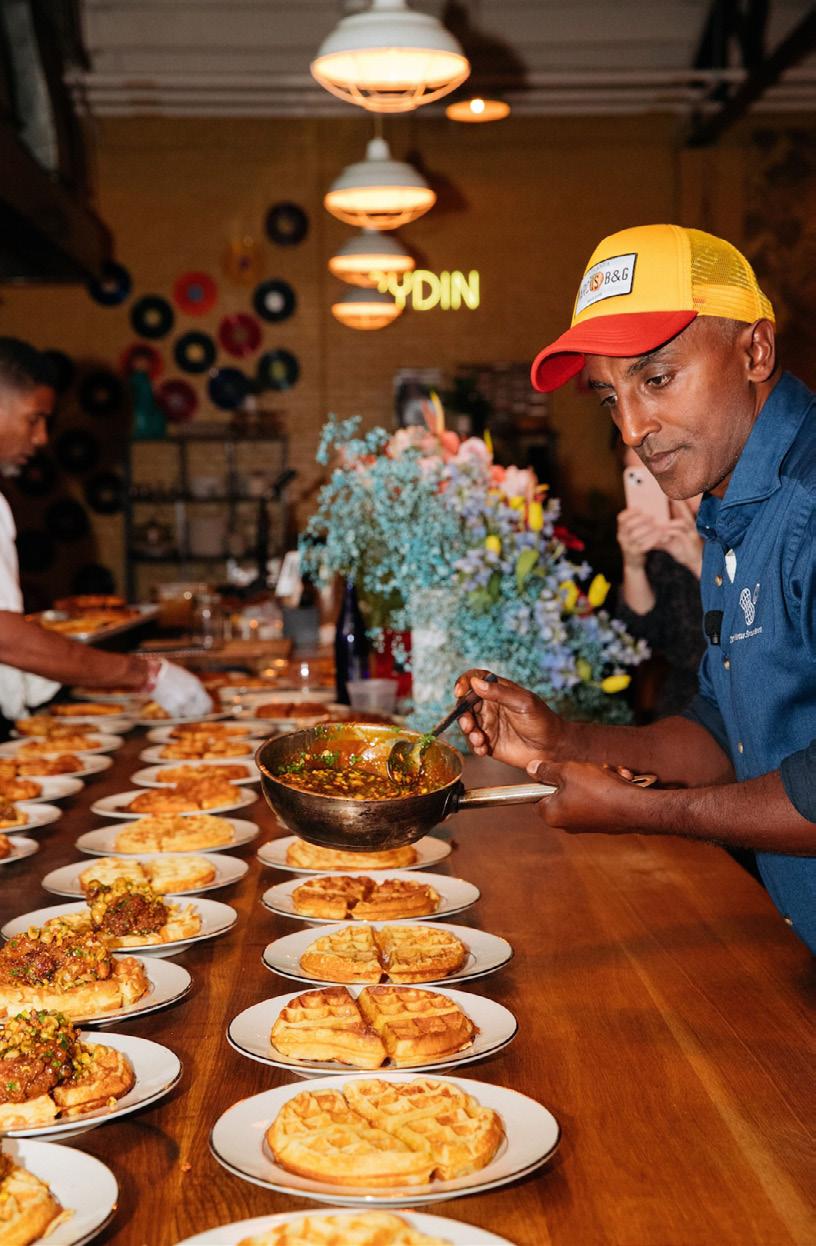
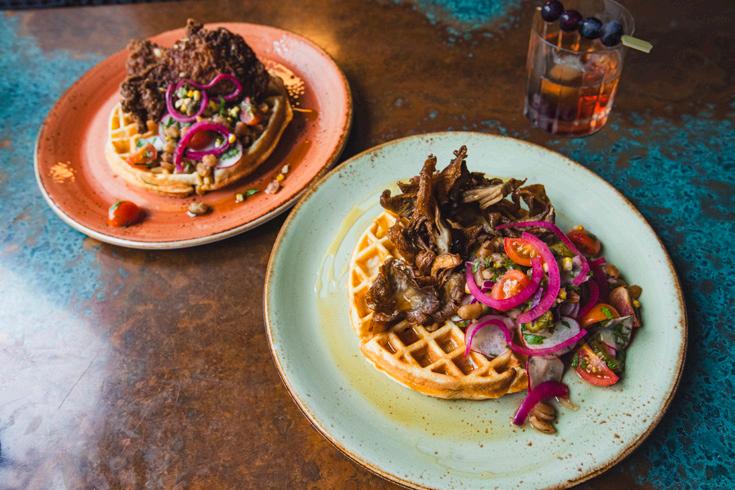

867.5 million impressions


Finally, NPB brought the comfort of a classic diner to life with a media and influencer preview night and weeklong menu takeover hosted by Chef Marcus Samuelsson. With international recognition and local appeal in Atlanta stemming from his new restaurant, Chef Marcus was the perfect partner for the activation. The preview night kicked off the restaurant takeover and included a multi-course menu featuring a variety of comfort foods with peanuts highlighted in each dish. The menu included a mix of upscale diner staples and some of the chef’s personal Southern favorites, such as peanut butter chicken and waffles and a PB&J old-fashioned, which is included later in this issue. The restaurant was transformed by adding touches to the space that evoked comfort, nostalgia, and retro vibes, including neon signage, vinyl records, roller skates and more.
This multi-pronged approach across earned and paid media generated 109 placements and 867.5 million impressions — the most of any program this year! With the right spokesperson, NPB was able to deliver the message and promote the pop-up locally with influencers and media, who amplified and extended our message to further solidify our connection between peanuts as a comfort food.
The “We Grow Comfort” campaign and its three activations were overwhelmingly successful. The unique approaches — the first-ever self-care for peanuts, the first-ever food that could be enjoyed by both humans and dogs alike and a popup dining experience with peanut foods — stood out to Gen Z and millennials and highlighted all the ways peanuts and peanut butter are nutritious, delicious and comforting.
10
² An impression is an opportunity for content to be seen by someone, such as a friend’s post showing up on your social media feed. An engagement is when someone takes an action on the content, such as when you like, comment or share a friend’s post on social media.
1
Kids Come First: National Peanut Board Bolsters School Nutrition Outreach in 2024
By Markita Lewis, MS, RD
To support ongoing education, training and innovation in school nutrition, this year the National Peanut Board (NPB) has increased its investment in K-12 nutrition. Alongside creating an in-development school breakfast toolkit and developing relationships with school districts and state school nutrition associations, NPB is involved with several initiatives to educate schools about the power of peanuts and provide resources for safely keeping peanuts in schools.
According to preliminary 2023 USDA data, school nutrition programs serve school breakfasts to 14.45 million students and school lunches to 28.5 million students every day1. This group of students represents a number of cultures and dietary preferences, yet many schools do not serve peanuts, an affordable and accessible food that can fit into these lifestyles.
Current guidelines and research do not support blanket bans on any food in childcare centers and schools, including peanuts. Active food allergy management and education are the best ways to help schools stay ready for any allergic reaction, and this approach opens more culinary options for schools and the students they serve2.
Healthy Kids Collaborative
Healthy Kids Collaborative (HKC) is a strategic initiative of the Culinary Institute of America (CIA) focused on creating solutions for school nutrition professionals to meet the challenges of feeding school children tasty, appealing and nutritious foods. The collaborative annually brings together a group of 35 to 40 school nutrition leaders from around the country, top food service management companies, school nutrition consultants and other stakeholders and corporate members.
In addition to the annual HKC meeting held at the CIA campus in Napa, California, the initiative encourages collaboration between corporate members and school districts. This year, NPB is working with the New York City Public Schools District to develop a series of recipes, and we are also involved with HKC’s member working groups.
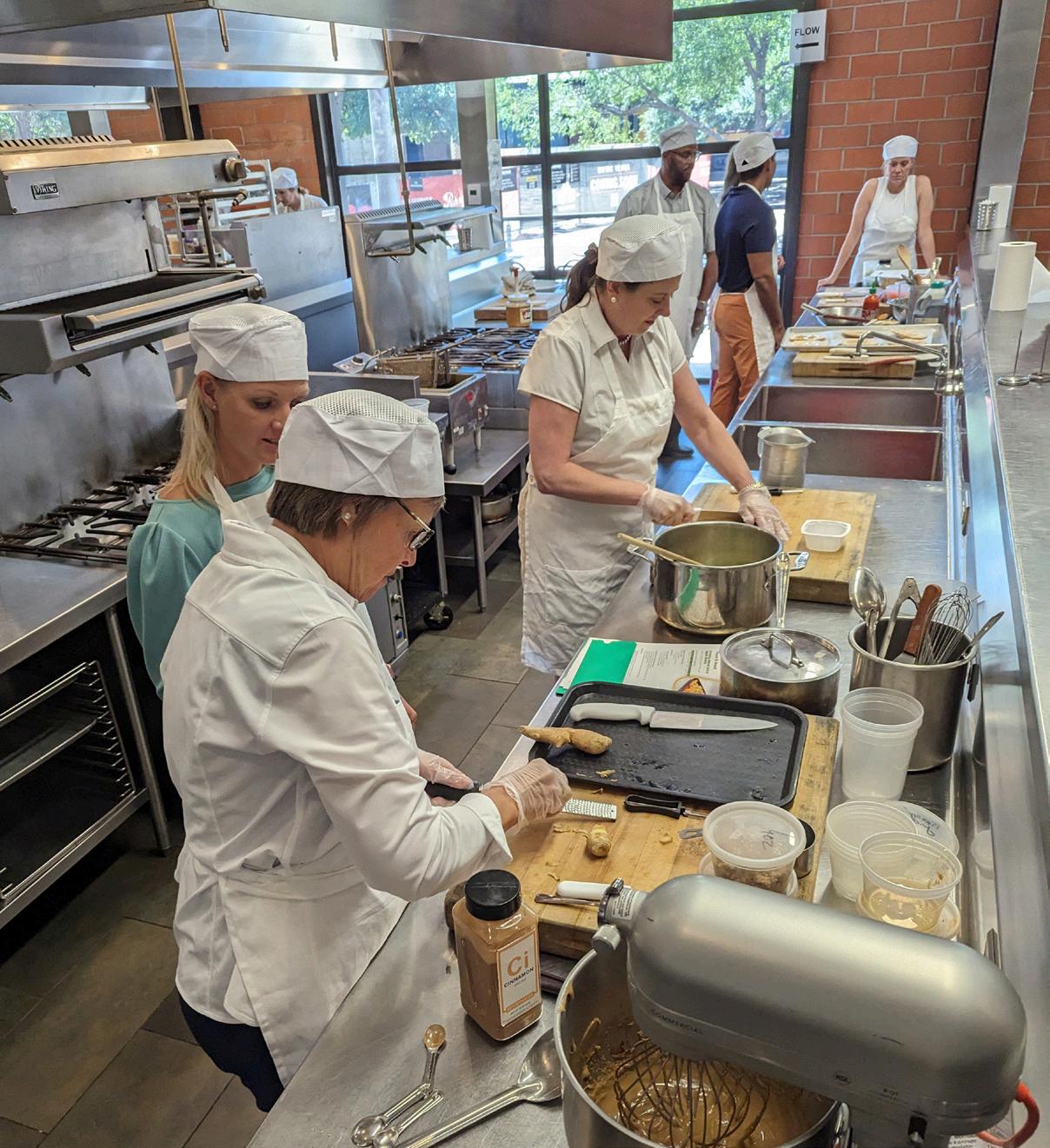
School Nutrition Association Annual National Conference
The School Nutrition Association (SNA) is recognized as the authority on school nutrition, a nonprofit professional organization representing over 50,000 members across the country. The School Nutrition Association Annual National Conference (SNA ANC) brings together thousands of school nutrition program operators, industry and other school nutrition organizations for education and networking.
NPB participates in this conference annually due to its broad reach within the school nutrition community. At the expo, NPB partners with The Peanut Institute (TPI) to bring food allergy management resources and education about the benefits of serving peanuts in schools. Additionally, NPB has presented education sessions several times on topics like food allergy management, global flavors and plant-based proteins. NPB is on the conference program this year with the presentation Food Allergy Management in Schools: Practical Guidelines and Legal Considerations with speakers Tarrah Westercamp, RD, SNS, and school legal expert Wesley Johnson.
11 PQ
Attendees participating in the market basket challenge at the Summer School Nutrition Summit.
SNA’s School Nutrition Industry Conference
The School Nutrition Industry Conference (SNIC) by SNA brings together professionals in school nutrition to explore the latest trends and innovations shaping the profession. NPB attends SNIC annually to network with school nutrition operators and see what’s on the horizon in school nutrition. These insights help inform what kinds of outreach and topics to integrate into ongoing education and resources for school nutrition professionals.
SNA’s Food Allergy Resource Center
NPB is the exclusive sponsor of SNA’s online one-stop shop for food allergy information. Available at SchoolNutrition.org, the resource center includes access to free trainings, webinars, an interactive Ask the Expert section and more. As part of the sponsorship, NPB hosts annual SNA webinars and the resource center is promoted throughout SNA’s media channels and conferences.
Summer School Nutrition Summit
NPB hosted the inaugural Summer School Nutrition Summit at the Culinary Institute of America campus in San Antonio, Texas, in 2023. This unique event brought together 30 key school nutrition leaders to discuss compelling trends and challenges in school nutrition while empowering them with resources to be able to meet those challenges headon and serve peanut products safely in schools. During the program, attendees received insights about peanut agriculture, experienced kitchen demos showing innovative peanut-packed recipes, and participated in a market basket challenge in the culinary kitchens. The experience empowered many district leaders to remove barriers to serving peanuts in their schools and bring peanut butter back to their menus.
NPB is currently planning its second Summer School Nutrition Summit for June 2024 and looks forward to seeing the thought leadership and collaboration that comes from this event.
Takeaway
School nutrition has always been and will continue to be an important area for NPB. We want to show schools that not only can peanuts be served and provide nutrition to students, but there are benefits to the management and operation of these school nutrition programs when they do.
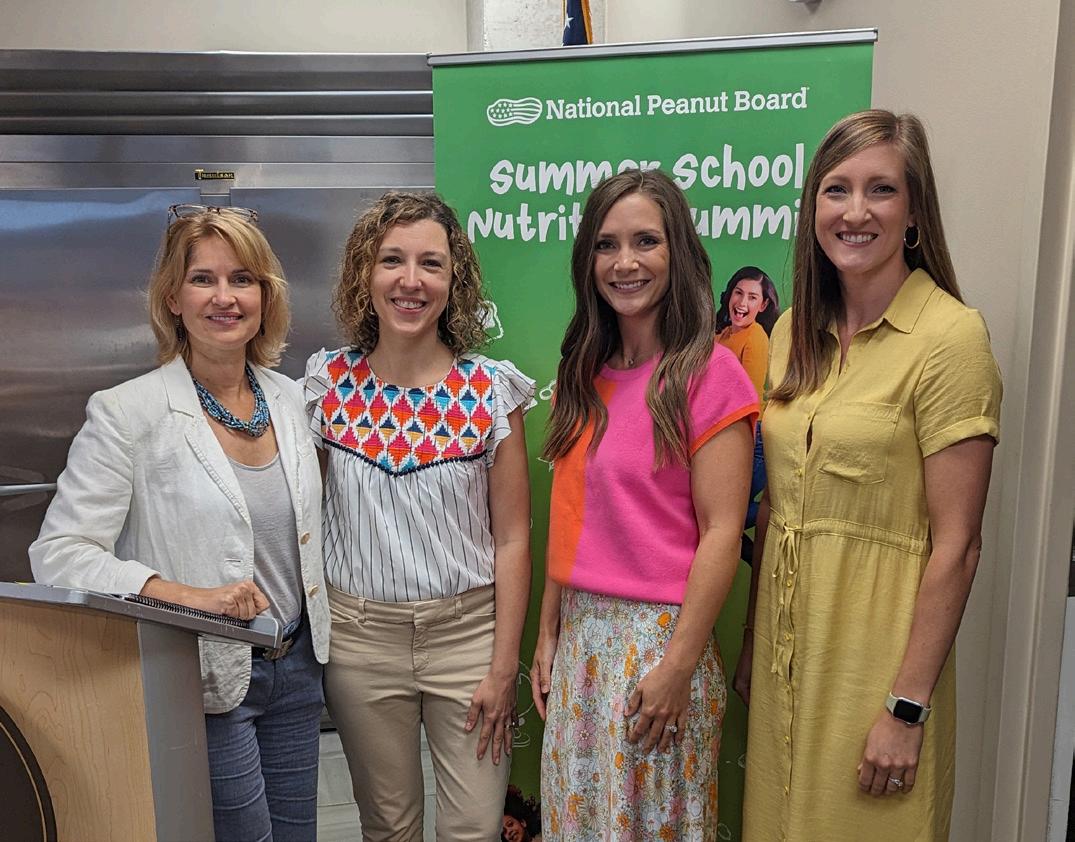
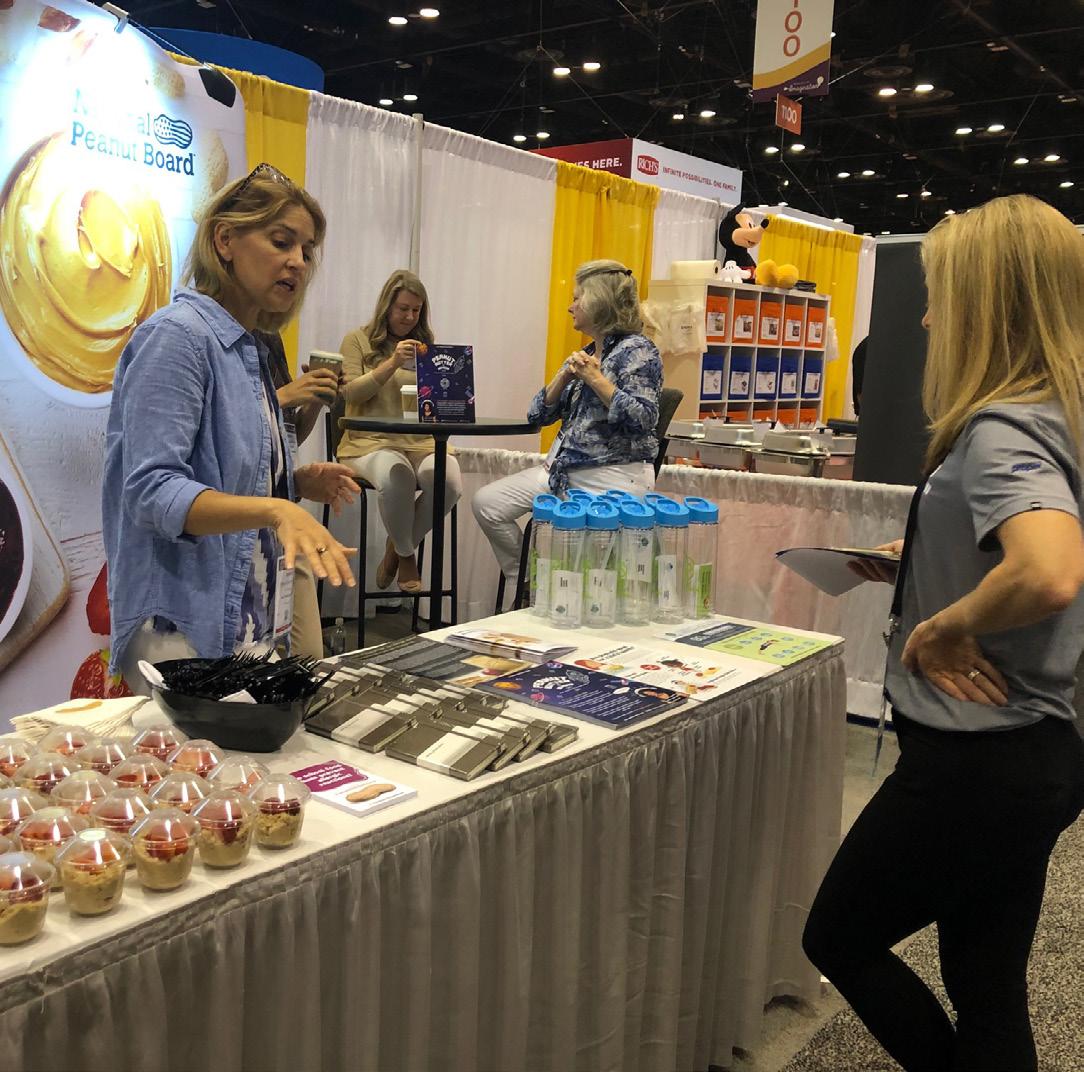

Scan the QR code below to listen to the Peanut Podcast Episode 19: Peanuts in Schools or visit PeanutsinSchools.org for more information and resources.
12
(L-R): Sherry Coleman Collins, NPB, Lauren Highfill Williams, NPB, Lexi Floyd, Texas Peanut Farmer, and Jessie Bland, Georgia Peanut Commission, at the Summer School Nutrition Summit.
Waserman,
to
Immunology vol. 147,5
1016/j.jaci. 2021 01 034
Sherry Coleman Collins, MS, RDN, LD, at NPB's FNCE booth.
1 ² School Nutrition Association. School Meal Statistics webpage. https://schoolnutrition.org/about-school-meals/school-meal-statistics/ Accessed Feb 7, 2024
Susan, et al. “Prevention and management of allergic reactions
food in child care centers and schools: Practice guidelines.” The Journal of Allergy and Clinical
(2021): 1561 -1578. doi:10
Sources
PB&J Old Fashioned
By Chef Marcus Samuelsson

The National Peanut Board and eight-time James Beard Award-winning chef, Marcus Samuelsson, partnered to reimagine classic comfort dishes with a limited-time-only pop-up dining experience at his restaurant, Marcus Bar & Grille in Atlanta. Below is Chef Samuelsson’s exclusive PB&J Old Fashioned recipe.
Ingredients
• 1 teaspoon of peanut-flavored syrup (such as Torani)
• 3 dashes of Angostura bitters
• 1 ounce of Chambord
• 2 ounces of bourbon
• Garnish: concord grapes, 1 large ice cube
Directions
1. Fill a mixing glass with ice.
2. Add simple syrup, bitters, Chambord and bourbon to mixing glass.
3. Stir until well chilled.
4. Strain into rocks glass over one large ice cube.
5. Squeeze the concord grapes over the drink, and drop into the glass to garnish.
Nutrients per serving
Calories: 215
Carbohydrate: 12.05 g
Total Sugars: 12.05 g

Scan the QR code below to see all of the recipes from our Dine with Comfort event.
13 PQ
Peanuts Unite Soccer Fans in 2024 Campaign
By Lindsay Stevens

The National Peanut Board (NPB) is continuing our work with The18 to promote peanuts in 2024 with our new theme, “United.” In a year poised to be defined by competition, sports and peanuts share a powerful commonality: the ability to unite. This year, NPB and The18 will emphasize the pivotal role peanuts play in fueling not just individuals but teams, reinforcing the notion that we are all American and nothing is as American as peanuts.
Our first activation, Re-United, allows NPB and The18 to make our storytelling relatable to a broader population of consumers by working with a college player or up-andcoming professional. Then, for our second activation, we'll tap into the excitement of the summer games by allowing fans to see one of their favorite soccer stars trade sports and learn the power of peanuts when it comes to fueling your body.
Additionally, NPB wrapped up its 2023 campaign with a total of over 35 million total impressions1 on our content. Across the board, we beat the goals we set for ourselves with our FY-23 campaign, reaching and engaging with a wide pool of soccer consumers. Through our compelling promotion, we received 17 million impressions, 4.5 million total content engagements2, 5.7 million on-site ad impressions and 25,000 clicks to NPB’s website.
When NPB first started working with The18, we conducted an initial brand lift survey. In November 2023, The18 conducted a follow-up brand lift study to understand how our campaign and work over the past two years have continued to influence the perceptions of peanuts and peanut butter as great foods for active lifestyles. Key results included:
(+9%) of consumers view peanuts as fit for an active lifestyle
(+9%) of consumers view peanut butter as fit for an active lifestyle
(+11%) of consumers view peanuts as the best nut for an active lifestyle
(+12%) of consumers intend to purchase peanuts
(+18%) of consumers intend to purchase peanut butter
About the Brand Lift Survey
The survey consisted of 587 nationwide consumers, with a sample of those exposed to the campaign and those who weren’t. The results were compared to the results of the previous years to see how we continue to move the needle.
56% 69% 67% 93% 69% 14
An impression is an opportunity for content to be seen by someone, such as a friend’s post showing up on your social media feed. An engagement is when someone takes an action on the content, such as when you like, comment or share a friend’s post on social media. 1 2
State Co-Promotions
Connect with Consumers to Creatively Promote Peanuts
By Lindsay Stevens
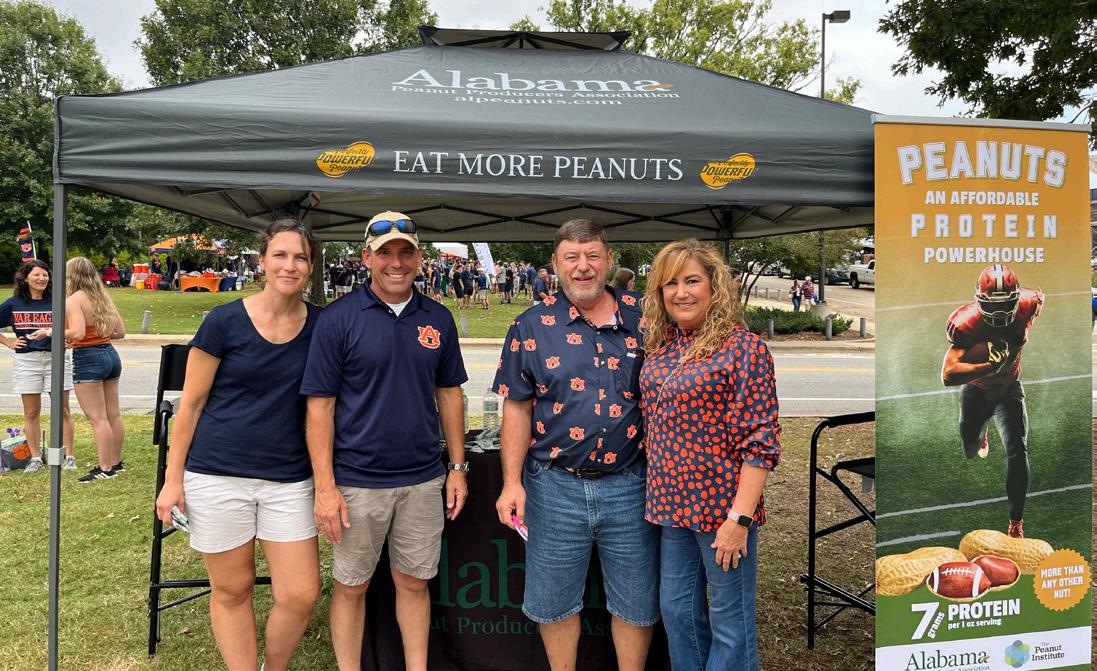
The Alabama Peanut Producers Association (APPA) partnered with Auburn University to set up a tent and trailer, both of which had NPB’s logo, and hand out bags of peanuts outside Auburn’s football stadium on Saturday, September 16.
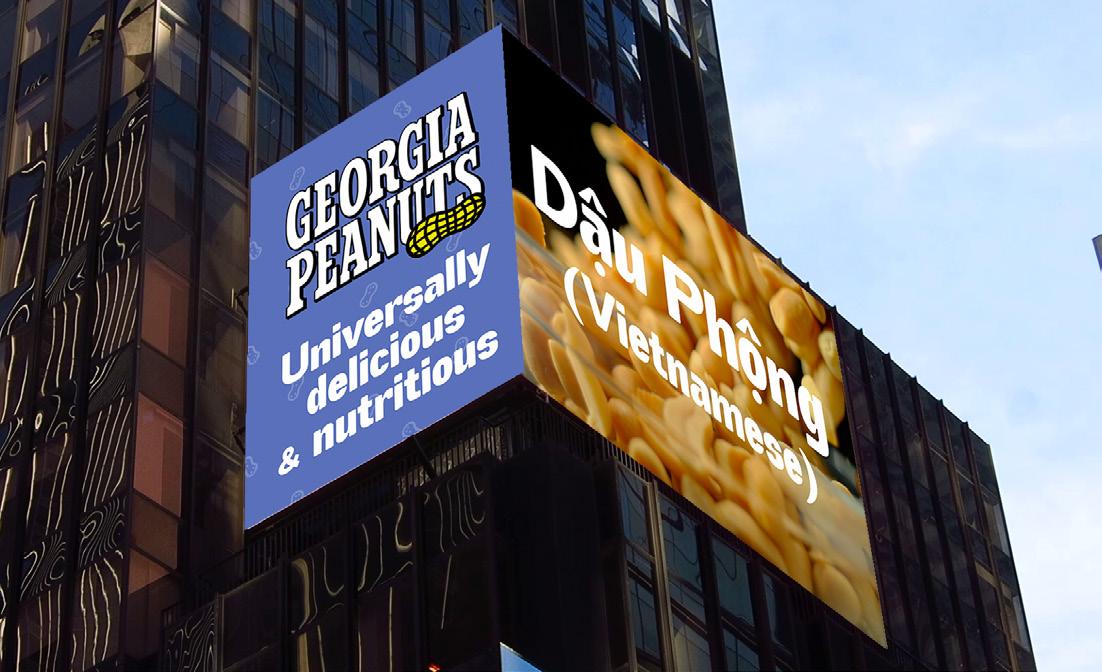
The Georgia Peanut Commission (GPC) ran ads in Times Square in New York City with the word “peanuts” displayed in the world’s top five languages to promote the message that love for peanuts is universal. The ads ran 40 times per day, seven days a week, and included NPB’s and GPC’s logos.
Since 2004, the National Peanut Board (NPB) and state peanut producer organizations have combined co-promotion dollars to creatively promote America’s favorite nut in their respective state. In 2023, eight state peanut producer organizations put their money to good use to keep peanuts on the minds of consumers.

The Florida Peanut Producers Association (FPPA) created promotional packaging for their peanut packs to hand out at events throughout the year. FPPA expects to reach over 360,000 people at these county, state and national level events.
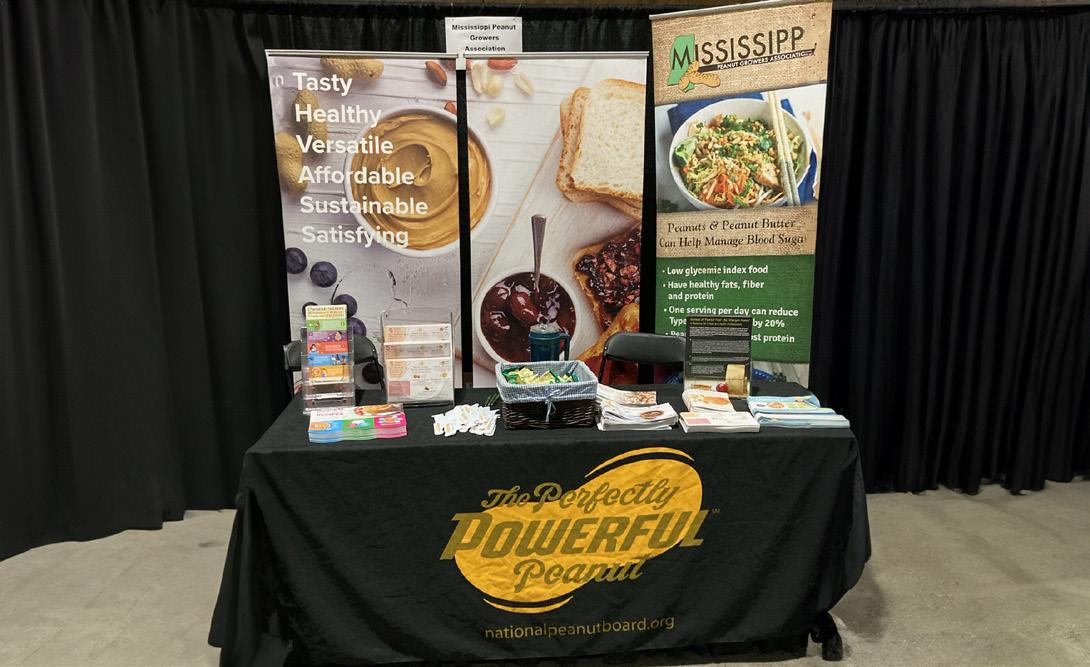
The Mississippi Peanut Growers Association (MPGA) exhibited and passed out peanuts and literature at the Mississippi State Fair from October 5-15. Additionally, MPGA passed out peanuts and allergy literature at the Mississippi Nurses Convention, which is attended by an estimated 900 registered nurses, advanced practice registered nurses and student nurses.
15 PQ
Photo courtesy of APPA.
The updated snack bag. Photo courtesy of FPPA.
MPGA’s booth at one of the conventions they attended. Photo courtesy of MPGA.
GPC’s billboard in Times Square. Photo courtesy of GPC.
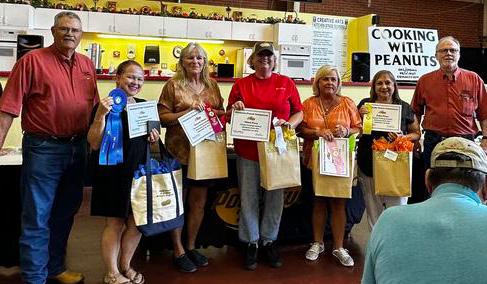
The Oklahoma Peanut Commission (OPC) participated in the Oklahoma Farm-to-Table Festival in March 2023, where attendees explored historic perspectives, farm life and how food gets to their tables. OPC also hosted their cooking with peanuts contest at the Oklahoma State Fair in September. OPC commissioners provided tidbits of peanut information and trivia to the audience during the judging of the contest. Ashley Yates’ peanut brittled peanut butter pretzel pies won first place.
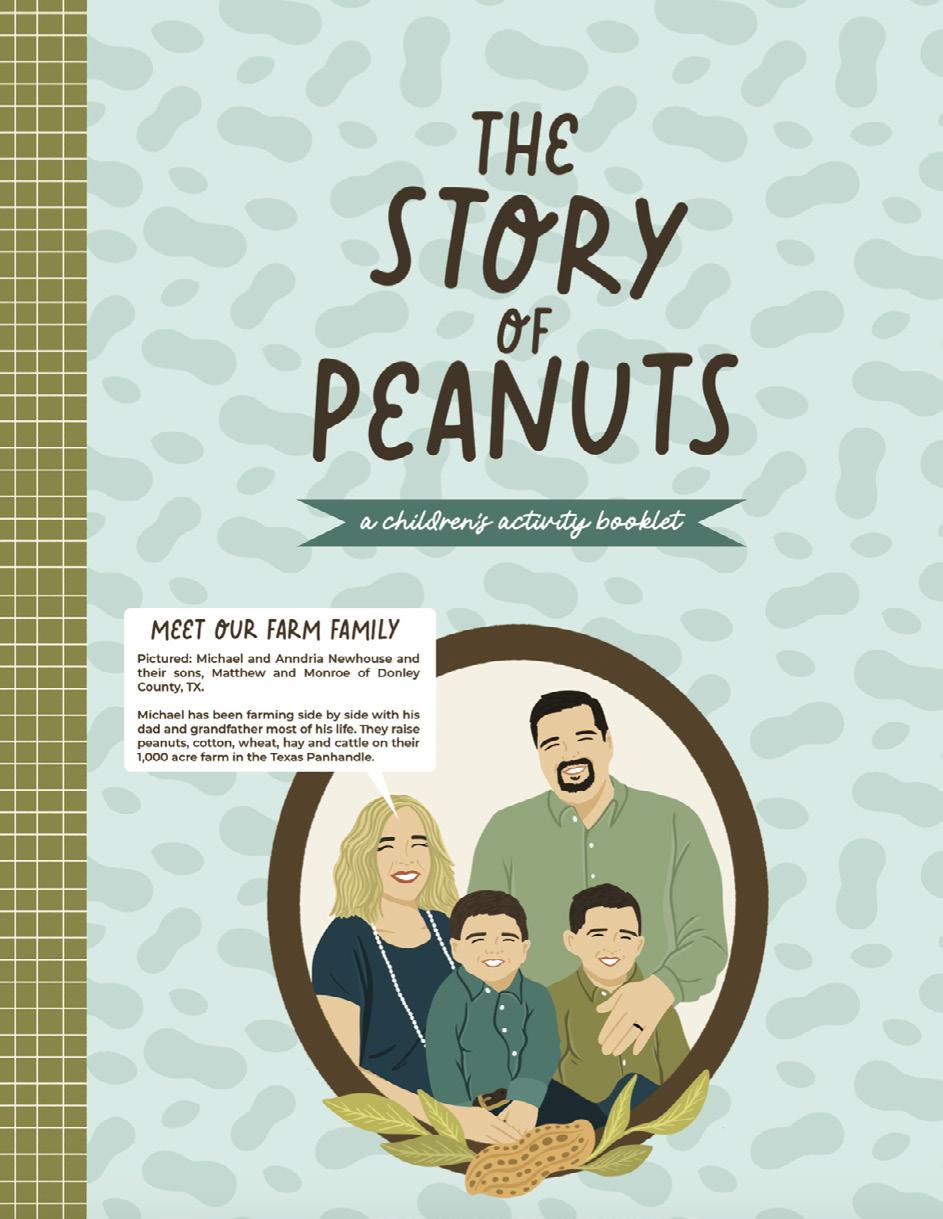
The Texas Peanut Producers Board (TPPB) worked with a designer to create a downloadable youth resource around the production, history and nutritional story of peanuts. The back cover included information about who TPPB and NPB are. This resource can be used by teachers and others wanting educational materials for kids.
The North Carolina Peanut Growers Association (NCPGA) created apparel for the NCPGA board members and staff that features the state association logo and NPB’s “We the Peanut” logo to spread awareness for the new campaign.

The Virginia Peanut Growers Association (VPGA) developed a t-shirt for growers to wear to promote peanuts. These shirts will be distributed at various grower meetings and events as well as giveaways to reach people outside of peanut growing areas.
16
(L-R): Les Crall, OPC chairman and NPB Oklahoma alternate; Ashley Yates, first place; Linda Gronewaller, second place; Amy Durst, third place; Michelle Robertson, fourth place; Karen Moseley, fifth place; David Nowlin, OPC executive director. Photo courtesy of OPC.
Photo courtesy of VPGA.
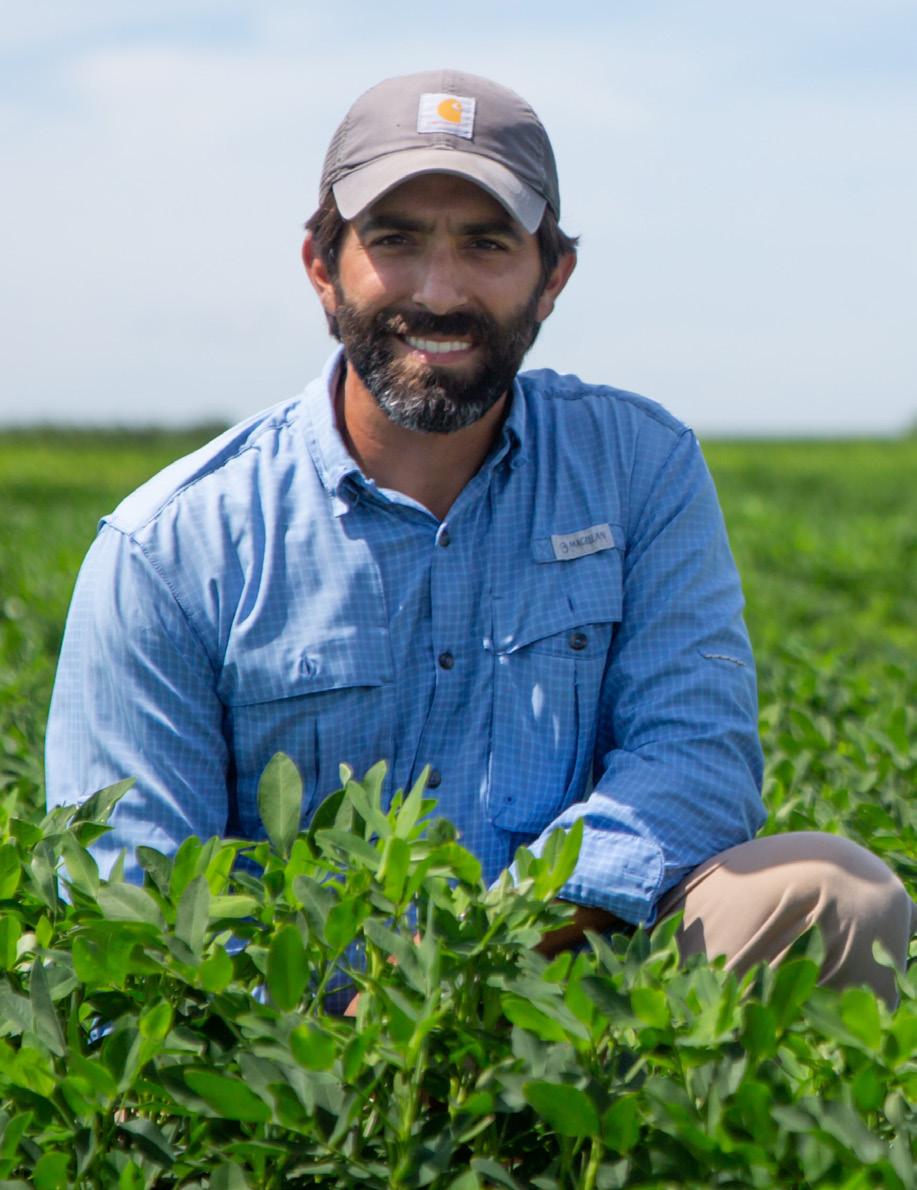
Peanut production in the U.S. is skyrocketing, so putting future peanut crops to good use will take new and innovative approaches and requires attention now to set farmers and the industry up for success. Dr. Nino Brown of the University of Georgia is a peanut breeder looking into developing new and improved peanut varieties like high-oleic and highoil-content peanuts. These varieties are being created to allow for new uses of peanuts to be introduced.
Exploring Future Uses for Peanuts: Dr.Nino Brown with
By Lindsay Stevens
NPB: Tell us about the research you do.
BROWN: I’m a peanut breeder at the University of Georgia, and my job is to develop new and improved peanut varieties that meet the needs of growers, shellers, manufacturers and consumers. In the pursuit of developing new and improved peanut varieties, we need to understand the underlying genetics that control our traits of interest, such as improved oil content, disease resistance, yield or quality. So, we also do quite a bit of research to understand the underlying genetics, map the location of genes and develop DNA markers that we can use to improve our breeding efficiency.
NPB: What is the demand for high-oleic and high-oilcontent peanuts?
BROWN: Currently, cultivars with high-oleic fatty acid percentages are grown on 20 to 25% of peanut acres. These high-oleic peanuts have improved shelf life, so they are grown primarily for the roasted snack and candy trade, whereas the bulk of peanuts grown in the southeastern U.S. are “normal” oleic peanuts and will be used in peanut butter.
Regarding high-oil-content peanuts, we don’t currently have a Southeast-adapted variety that is grown specifically for oil production. However, there is a great deal of interest from growers and industry stakeholders to take part in the global peanut oil market, which is quite large. Countries like China and India crush most of their domestic and imported peanuts for oil. In the U.S., there is increasing demand for healthy cooking oils, excellent potential for biofuel production from peanut oil, and even the potential for peanut oil-based plastics. Growing peanuts specifically for oil production could have a positive effect on the prices growers receive by increasing demand both for edible peanuts and peanuts for oil.
17 PQ
NPB: What is the process for developing these new varieties like?
BROWN: Development of new, high-oil peanut varieties is similar to our current methods. The breeding process all starts with cross-pollination between two unique parental varieties or germplasm lines. These parents usually have beneficial or complementary traits that the breeder wishes to combine. For instance, we might be trying to combine high oil content from a peanut germplasm line developed in India, with a cultivar bred for Georgia with high yield potential and a high level of disease resistance. After we make that crosspollination, we evaluate the progeny for several years. We visually select plants that appear high-yielding, have good disease resistance, good shelling characteristics and also exhibit high oil percentages. This means that we visually inspect these individual plants throughout the growing season. Then we harvest the good ones individually, shell them individually, measure their shelling characteristics, measure oil content of the seeds from each plant, and discard those that don’t meet our desired specifications. We will do this to several hundred plants each year, in addition to thousands more that we are simultaneously evaluating for other breeding objectives each year.
After a few years of individual plant evaluations, when we have identified a few plants that exhibit the required high oil content and also high yield and adaptation in the Southeast, we will begin increasing seed supply and testing the lines in replicated yield trials at several locations across the state and region. After 3-5 years of replicated yield and quality testing, the improved germplasm line or cultivar will be released. Cultivars will be distributed to growers for largescale production, whereas improved germplasm lines will be used primarily by other breeders to improve oil content within their breeding programs. The whole process can take 10-15 years from initial cross to commercialization of a new peanut variety. There are a few tricks we can use to accelerate that process and bring it down to 8-10 years, but breeding is a long process that requires significant levels of investment in time and resources.
NPB: What do growers/industry need to know/be prepared for?
BROWN: I want to stress it will take time before we have a high-oil-content peanut variety that can be profitably grown in the Southeast, which has notoriously high levels of tomato-spotted wilt virus, late-leaf spot, white mold and nematodes. We will push hard to get these varieties out as soon as possible using winter nurseries and greenhouses for accelerated generation times. We’re leveraging cuttingedge technologies to make this happen as quickly as possible. Additionally, high-oil peanut varieties will likely require another level of peanut segregation at buying points and shelling facilities. The logistics of incorporating non-food use peanuts into the industry pipeline will take careful consideration.
NPB: What non-edible uses do you see being created in the future?
BROWN: Peanut oil makes an excellent cooking oil with a long fry life, so increased market penetration for cooking oil is a no-brainer. Peanut oil also has excellent potential as a biofuel. With current peanut oil levels of 45-50% — and breeders reaching for 60% or more — peanuts can produce about 50% more oil per acre than soybeans1. The oil can also be used in the development of bio-based plastics. The meal that is left after crushing is high in protein and is an excellent poultry feed. Coming from a state that produces a great deal of both peanuts and poultry, there’s a lot of opportunity there for synergy.
Overall, the opportunities for non-edible use peanuts are very promising and have the potential to further build upon the powerful peanut’s sustainability story. We will continue to work on breeding for higher oil content alongside our normal breeding activities to satisfy this emerging market and our existing market needs.
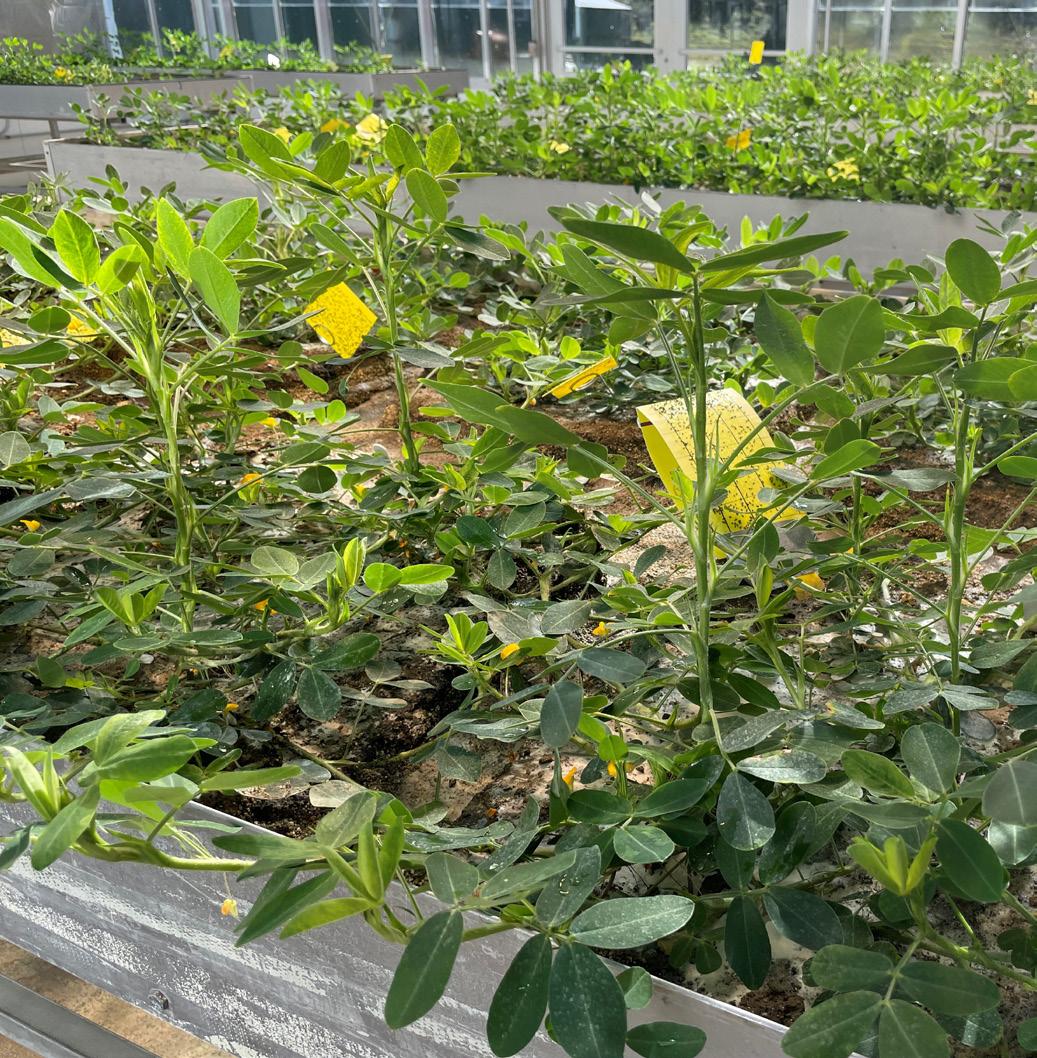

Scan the QR code to listen to The Peanut Podcast Episode 21: Alternative Uses for Peanuts, which features Dr. Nino Brown.
18
Soybeans have an oil level of 18%.
1 Photo courtesy of Dr. Nino Brown.
Pup’s Lazy Sundae
By Sherry Coleman Collins, MS, RDN, LD
It’s no secret that pups and people share a common love of peanut butter. As part of our 2023 ‘We Grow Comfort’ campaign, the National Peanut Board celebrated National Dog Day by creating the first-ever peanut butter snacks that are dog-safe and tasty for people and pups! Our Pup’s Lazy Sundae recipe is just one of six recipes that are perfect for you and your pup.
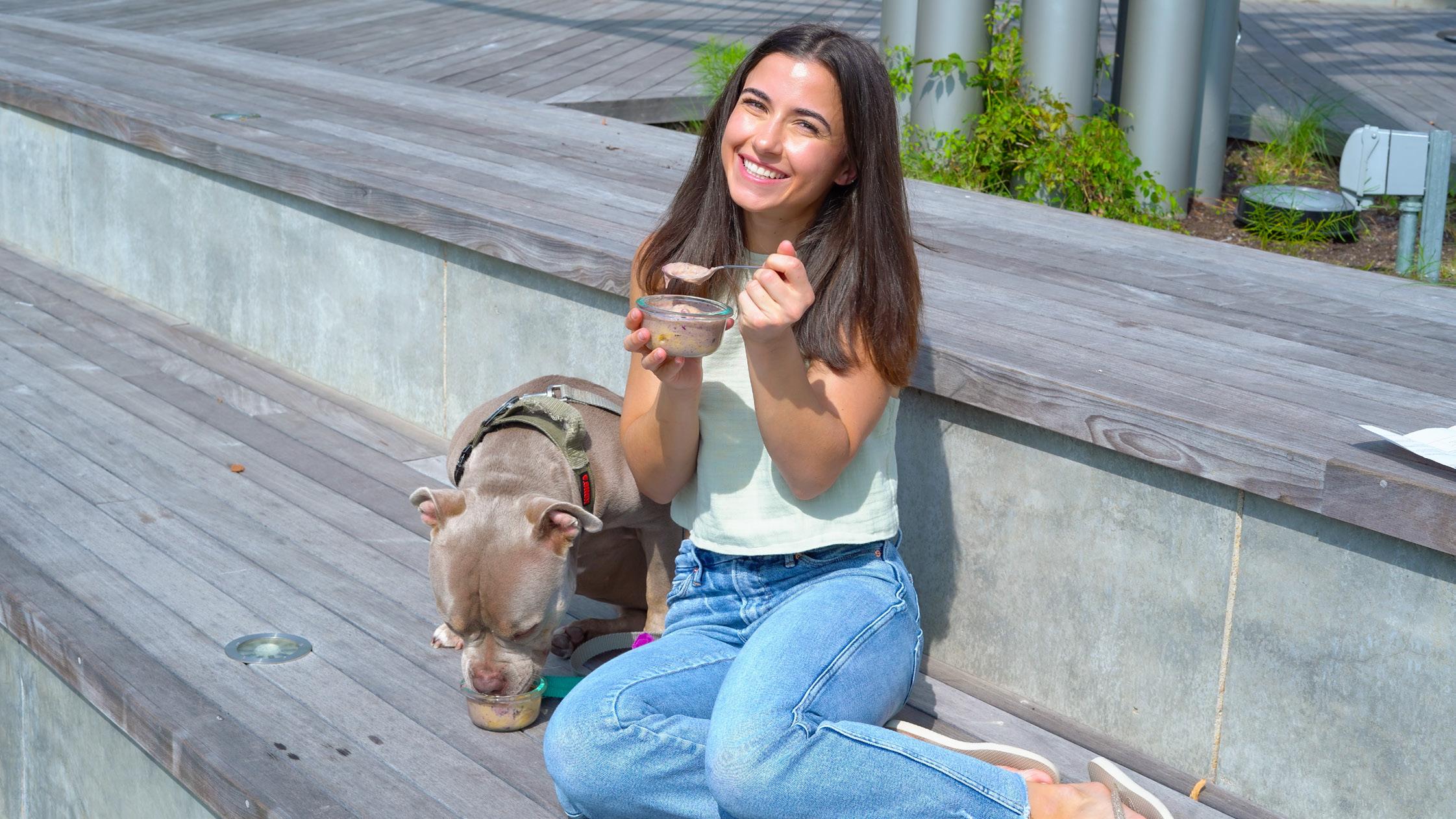
Ingredients
• 2 chopped, frozen bananas
• ½ cup peanut butter
• ¼ cup frozen sweet cherries without sugar added
Directions
1. Add chopped bananas to food processor and blend until bananas resemble rice.
2. Add peanut butter and blend until mixture begins to look smooth and fluffy. This should happen quickly.
3. Add in frozen cherries and pulse 2-4 times.
4. Pour into bowl or glass and serve.
5. Optional: Top only the pup-parent portion with chopped chocolate.
Nutrients per serving for pup parent1
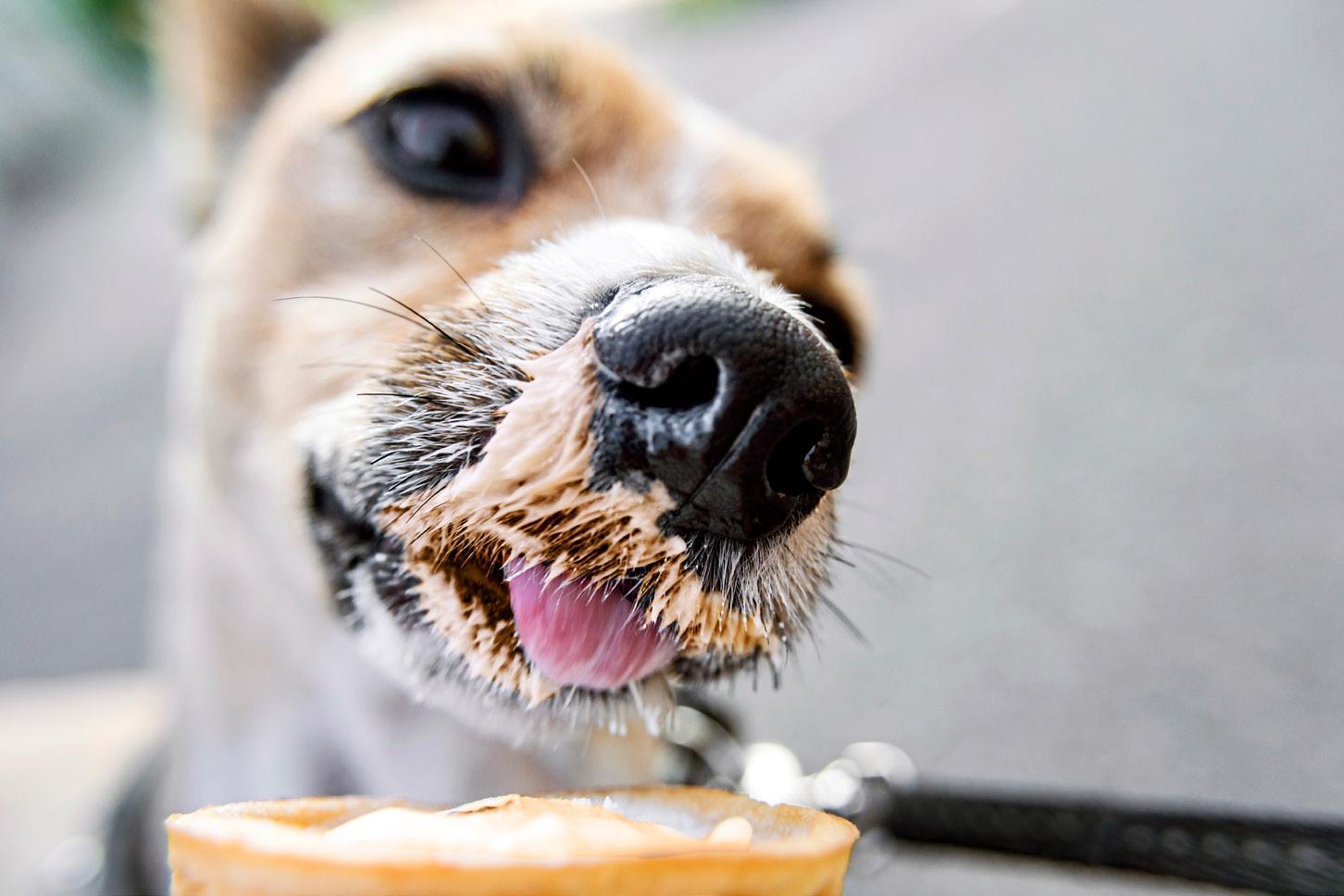
Disclaimer: Always seek the advice of your veterinarian with any questions you may have regarding the nutritional needs of your pet. Ingredients that should not be consumed by dogs are noted. Do not feed these treats as more than 10% of the dog’s diet. These are not complete foods and should be enjoyed only as a celebratory treat and are not meant to replace your dog’s daily diet. Substitutions are not recommended. Avoid using peanut butter with Xylitol, a sugar substitute that is toxic to dogs.

Scan the QR code below to see all six recipes.
19 PQ
Calories Calories from Fat Trans Fat Cholesterol 517 300 33.3 g 0 g Carbohydrate Protein Fiber Sodium 48.5 g 15.9 g 6.9 g 274 mg Without optional chopped chocolate 1
Retailer Marketing Drives Peanut Butter Awareness and Sales
By Lauren Highfill Williams
Whether grocery shopping online or in-store, supermarkets are an important touchpoint for consumer buying decisions. In 2023, the National Peanut Board (NPB) promoted peanuts and peanut butter to consumers in supermarkets through a retail dietitian (RD) program and shopper marketing program.
As heroes at point-of-sale, retail RDs serve as a trusted source of information for shoppers. NPB partnered with trusted Hy-Vee RDs to reach their loyal shopper base. Hy-Vee is a supermarket chain in the Midwestern and Southern U.S. with more than 280 locations.
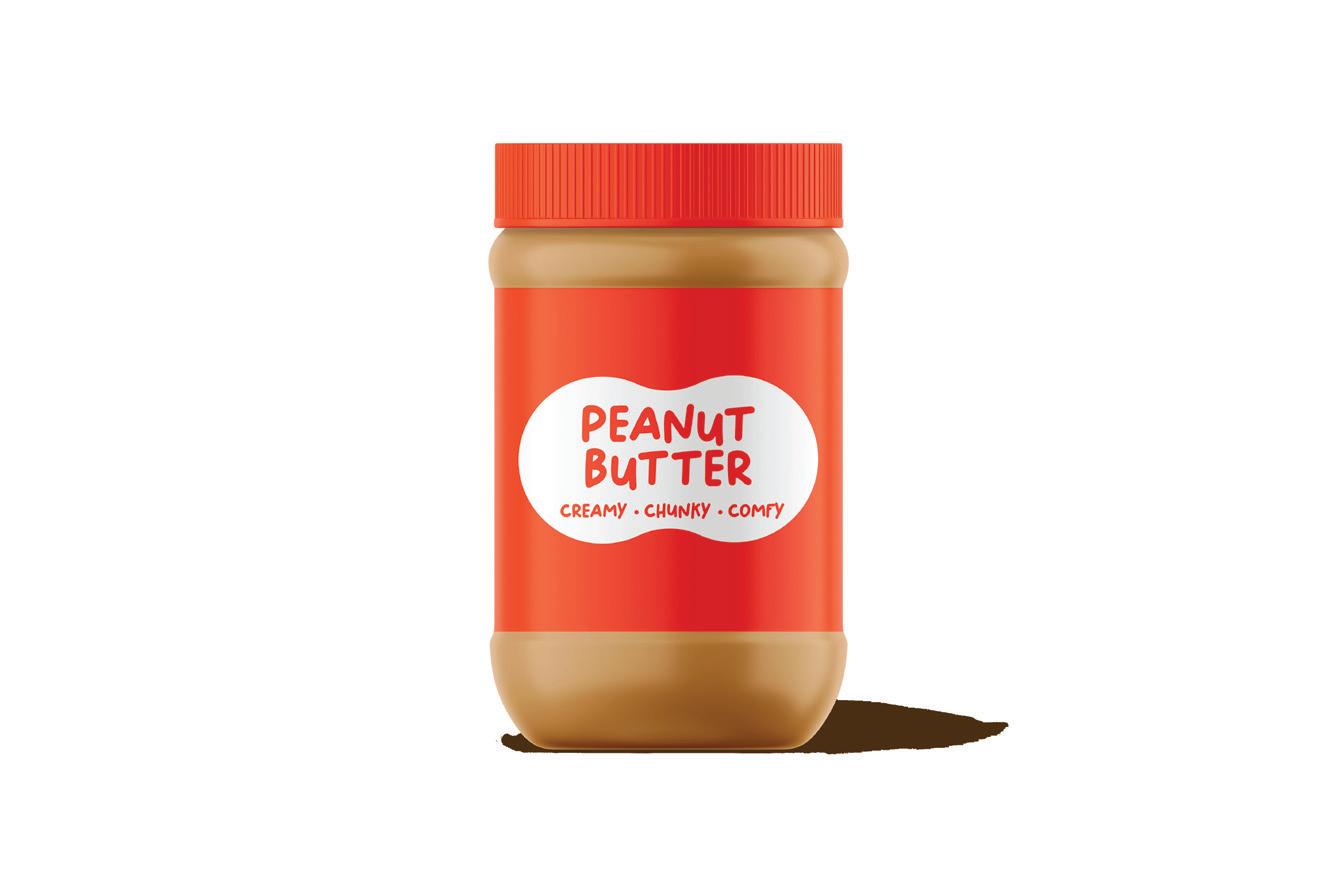
NPB sponsored Hy-Vee’s month-long Meet Your Metrics program, which provided shoppers with coupons and messaging on the nutritional benefits of peanuts. Building on that momentum, peanuts and peanut butter were on display as the Dietitian Pick of the Month across Hy-Vee stores in July. Hy-Vee RDs focused on showcasing the many benefits of peanuts and peanut butter while meeting shoppers where they are. Peanuts and peanut butter were integrated into store signage, cooking demos and local events. In addition, direct links to peanuts and peanut butter were included in digital ads on Hy-Vee’s website as well as their weekly digital newsletter, directly reaching 170,000 shoppers. Social media content, local television cooking segments and media articles vastly extended the reach of positive messaging about peanuts. The robust mix of exposures helped to drive a peanut butter sales increase of 15% when comparing July 2022 sales to July 2023.


Complementing the retail RD work, NPB partnered directly with supermarkets for shopper marketing as well, including Kroger, HEB, Price Chopper, Hy-Vee, Stop & Shop, Giant Food, Weis Markets, Rouses Markets and others. NPB promoted the creamy, chunky, comfy aspects of peanut butter through store magazines, shelf signage, website and mobile ads, social media advertising, in-store audio advertising, billboards, special events, broadcast segments and more. Collectively, 16 retailers participated, operating 3,100 stores across the U.S. to drive awareness and purchase intent of peanut butter.


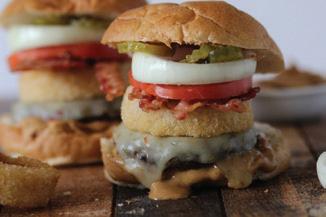
20


“I have worked in many sectors of the agriculture industry, and I am thrilled to have the opportunity to make my home in the Virginia peanut industry,” Joyner said. “Virginia is truly special with our rich history and unique peanut products. This position has been a huge blessing to me, and I am excited to be an advocate for our growers, promote Virginia Peanuts, and continue to learn from the best.”
Virginia Peanut Growers Association Names
Caitlin Joyner
New Chief Executive Officer
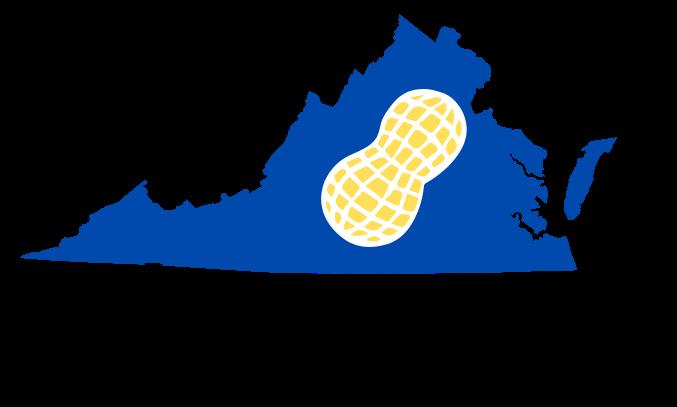
The Virginia Peanut Growers Association (VPGA) named Caitlin Joyner to replace former VPGA CEO Dell Cotton. Joyner graduated from Virginia Tech University in 2017 with a Bachelor of Science in crop and soil science-agronomy.
Prior to her role with VPGA, Joyner was a high school agriculture teacher and Future Farmers of America (FFA) advisor in Suffolk, Virginia, for five years. Joyner also worked for a grain marketing cooperative in southwest Kansas and a soil and water conservation in northeast North Carolina. Additionally, Joyner served as a Virginia FFA state officer in 2013-14 and is a lifetime national FFA alumni member.
Joyner lives in Suffolk, Virginia, with her husband Daniel, and son Josiah.
21 PQ
American Peanut Council Hires Allison Randell as
New Director of Sustainability
Allie Randell was hired as the American Peanut Council’s (APC) director of sustainability in August of 2023. Allie oversees APC’s Sustainable U.S. Peanuts Initiative, which includes working closely with APC’s Sustainability Committee to draft standard operating procedures on grower enrollment, data collection and verification processes. She also provides training and support to industry stakeholders to help enroll their grower networks and works closely with state peanut associations and state extension services to activate recruitment programs in their respective states and regions. Additionally, Allie represents APC at trade shows and industry meetings across the peanut belt to raise awareness of the program.
Previously, Allie was a grower liaison for Premium Peanut. During her time there, she helped enroll more than 100 growers in the Sustainable U.S. Peanuts Initiative while also delivering training and support for the 2021-2022 crop years. Allie also provided agronomic support to growers regarding crop health, maturity and other management practices, while maintaining relationships with growerowners, buying point managers, crop consultants and other key industry stakeholders. Before working at Premium Peanut, Allie was a graduate research assistant at the University of Georgia and has held intern-level positions at Syngenta Crop Protection and Holder Ag Consulting. She holds the Certified Crop Advisor designation.


“Environmental sustainability is an inherent part of peanut production in the U.S., and that message needs to be heard at every step of the supply chain from producer to consumer,” Allie said. “I am passionate about supporting the role peanut growers play in sustainable food production and thrilled to join APC in leading the expansion of the Sustainable U.S. Peanuts Initiative.”
Allie has a Master of Science in plant protection and pest management from the University of Georgia and a Bachelor of Science in agriculture from Abraham Baldwin Agricultural College. Allie is a graduate of the Peanut Leadership Academy Class XII.
About the

The Sustainable U.S. Peanuts Initiative is an industry-wide and industry-fueled data-collection platform that helps growers tell their sustainability story. Not only are consumers demanding sustainable food production practices, but manufacturers, retailers and international trading partners are increasingly having the same expectations.
The Sustainable U.S. Peanuts Initiative is supporting America’s peanut farmers with metrics on the most efficient use of on-farm resources, as well as encouraging farm operation sustainability practices that will help meet these expectations, lead to increased demand for peanuts and set the stage for long-term economic viability.
Growers can enroll by scanning the QR code below or by going to SustainableUSPeanuts.org and completing an annual self-assessment and field-level survey. Additionally, growers who are enrolled in the Cotton Trust Protocol can join using that account to streamline their enrollment.
To learn more, contact Allie Randell at arandell@peanutsusa.com.

22
Grower Voices
Peanut Leadership Academy (PLA) class XII completed their two-year-long program in July of 2023. The National Peanut Board (NPB) sponsors two seats for underrepresented farmers per class. David Leary of Georgia and Brad Ward of North Carolina are two NPB-sponsored members of class XII.



NPB: What are the top learnings you took from your time in PLA?
Leary: I was able to meet new farmers from all over the South and learn how their operations were not too different from the way that we operate. We were willing to share insights on how and why we do certain things that make our operations click for us but are also willing to try some new ideas. I was exposed to new things inside the peanut industry and at all levels of the industry.
Ward: There were many things I learned during my time in the PLA. A few of them are how peanuts are grown in various regions of the country, and all the challenges each region faces.
NPB: What were you most surprised to learn?
Leary: I was most surprised to learn that we were producing a peanut paste that we ship in containers right here from Georgia to other countries where kids are on the brink of starvation, and we take part in getting them back to being healthier and surviving this thing called life.
23 PQ
David Leary
Brad Ward
GEORGIA NORTH CAROLINA
Class XII in Lubbock, Texas.
Ward: I was most surprised to learn how our friends in Texas struggled with drought so much and how peanuts can be grown with limited irrigation.
NPB: What did you enjoy most about your experience in PLA?
Leary: Getting to know new people from different places. And exposing myself to the higher echelons of the industry so that one day I might be able to help and look for new ideas and improve the future for farmers.
Ward: I most enjoyed talking with other farmers. I learned from them and shared best practices while cultivating lifelong friendships.
NPB: How has the experience better prepared you for future leadership in the peanut industry?
Leary: The classes that we took prepared us for how I should conduct myself when I'm around other high-ranking officials. I know how we should speak to them. I know how to talk about certain things to help at the lowest level. I want to stay on top of the industry because not only are we here to make money, but we are also here to feed the world peanuts.
Ward: The PLA has opened my eyes to the broader picture as far as what is involved with the peanut industry. The trip to Washington D.C. was eye-opening to the importance of lobbying and connecting with senators and congressmen to ensure they are fighting for the farmers and their best interests.
NPB: What would you say to another young farmer who’s considering PLA?
Leary: I would tell them that this is an experience of a lifetime, and it will help you on and off the farm for the rest of your life. It's only a few weeks but it impacts you forever.
Ward: I would recommend to any young farmer to accept an invitation to the PLA. It has been an absolutely wonderful opportunity, and I am extremely grateful to have been a part of it.
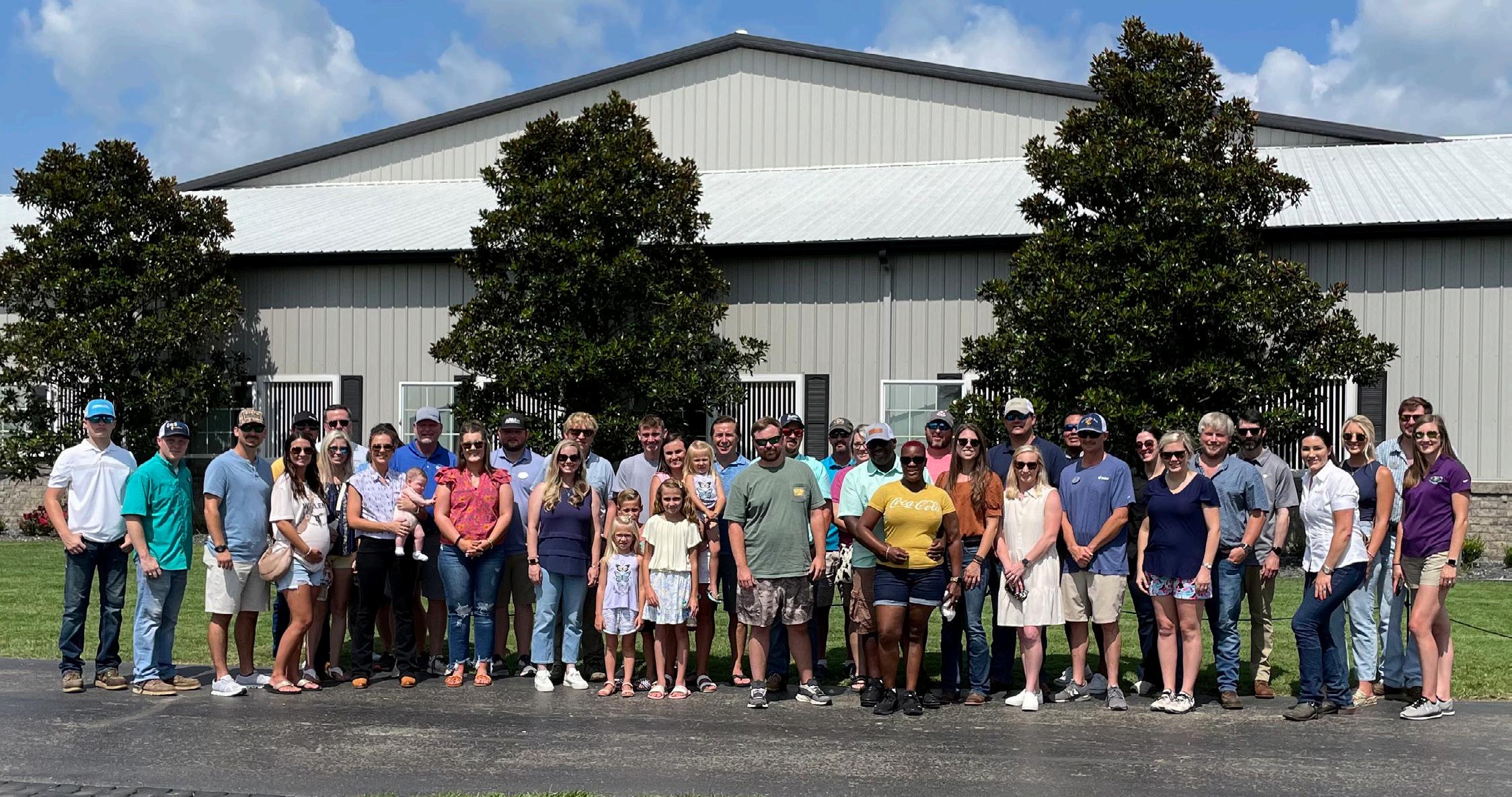
24
APC International Contractors and
By Tracy Grondine, American Peanut Council
25 PQ
Industry Representatives Gather in Amsterdam

Marketing, technical and regulatory specialists who carry out the American Peanut Council’s (APC) export promotion work around the globe met in Amsterdam Feb. 14-15, for the organization’s annual International Contractors’ Meeting. The event provides an opportunity for APC staff, contractors and industry representatives to collaborate and discuss key objectives and strategies for increasing exports in target markets. Participants from Canada, China, Europe, Germany, Japan, Mexico, the U.K. and the U.S. attended the meeting, along with APC Export Committee Chair and Texas grower Jeff Roper, National Peanut Board (NPB) President & CEO Ryan Lepicier, and industry representative Angelo Losurdo from Golden Peanut. Dr. Samara Sterling from the Peanut Institute provided an update on recent and upcoming research regarding the health and nutritional benefits of peanuts.
The two-day meeting included presentations highlighting achievements and identifying challenges from the previous year, and previewing plans for 2024. In addition, strategy sessions on best practices in setting goals, monitoring performance and developing collaborative assets were held to assist contractors in their work to build demand for U.S. peanuts.
“This was my first time joining APC’s International Contractor Meeting, and it gave me a whole new perspective on the work that goes on every day to promote our peanuts internationally,” said Roper, who also chairs NPB’s export committee. “I was impressed hearing from experts in each market and learning about how their work helps build export demand and provide the world with high-quality, nutritious American peanuts and peanut products.”
Exports are a vital part of the U.S. peanut industry and have grown to account for nearly one-third of total production. The event helps to kick off APC’s annual development of the industry’s comprehensive Unified Export Strategy. This document is reviewed and approved by the APC Export Committee before being submitted to the Agriculture Department’s Foreign Agricultural Service to request funding for export promotion programs.
As for exports in 2023, total U.S. peanut exports increased 24% by value and 18% by volume to reach a record high of $889.5 million, surpassing the previous high set in 2016. A sharp increase in demand from Europe was the main factor behind this increase. Exports to Europe (excluding the U.K.) rose 148% by value and 117% by volume to reach $182 million and 110,756 MT. At the same time, Europe’s overall share of exports by value doubled year-over-year, rising from 10% in 2022 to nearly 21% and it surpassed China to become the industry’s third-largest export market.
Mexico remained the top export destination for U.S. peanuts in 2023 with total shipments reaching a new high of $230 million and 155,532 MT. This represented the third consecutive year that shipments to Mexico achieved new record highs. Total exports to Mexico increased by 8% by value and 4% by volume as compared to the previous year.
26
Participants at the APC’s International Contractors’ Meeting. Photo courtesy of APC.
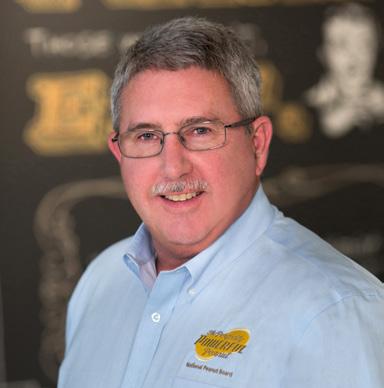
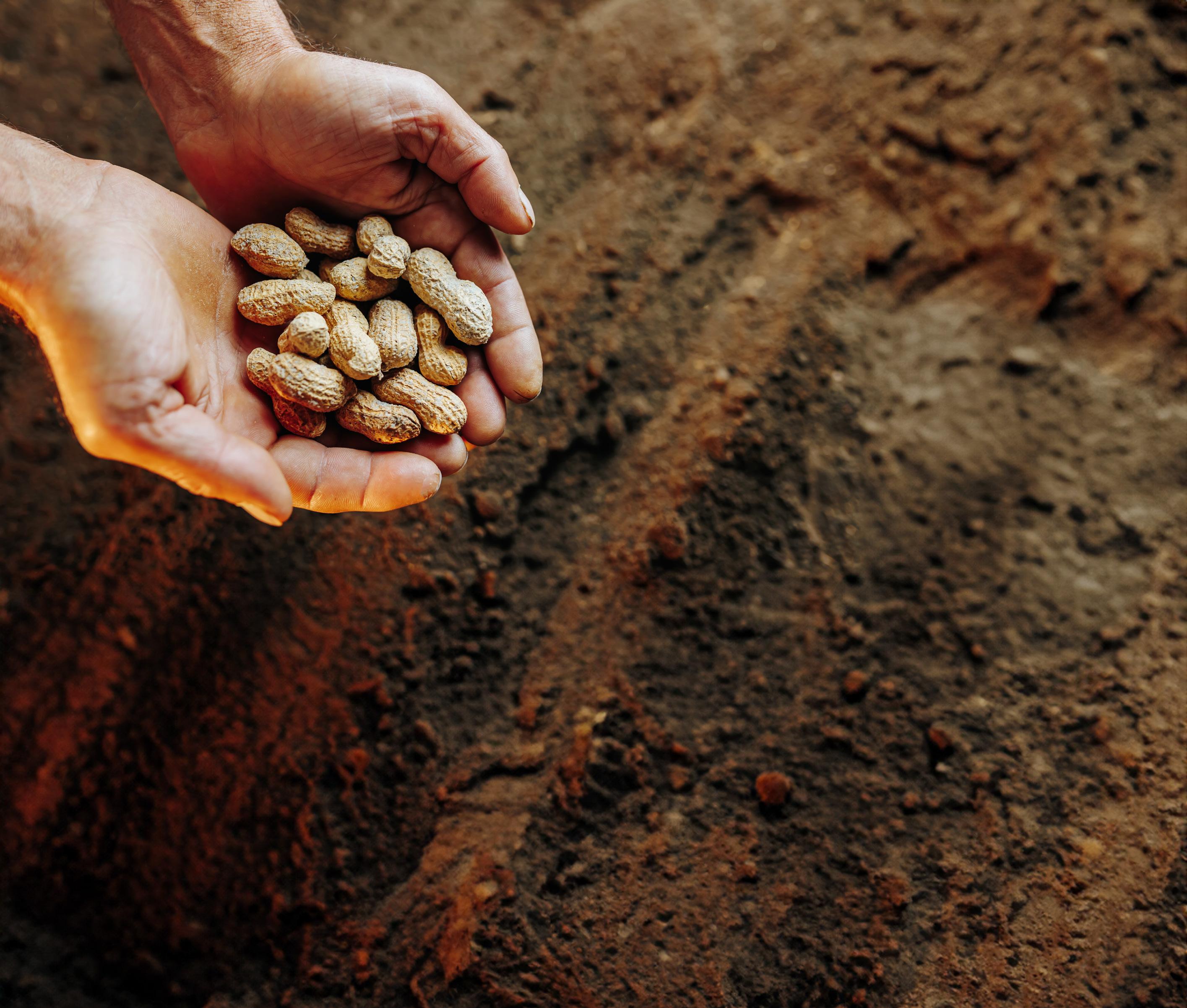


National Peanut Board 3350 Riverwood Parkway, Suite 1150 Atlanta, GA 30339 PRESORTED FIRST CLASS MAIL US POSTAGE PAID ATLANTA GA PERMIT 3832 Read former NPB Chairman Dan Ward’s article on why it’s critical growers act now on peanut sustainability. @NationalPeanutBoard @PeanutFarmers







 BY RYAN LEPICIER President & CEO
BY RYAN LEPICIER President & CEO

































































